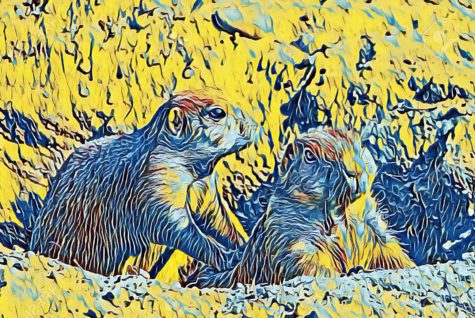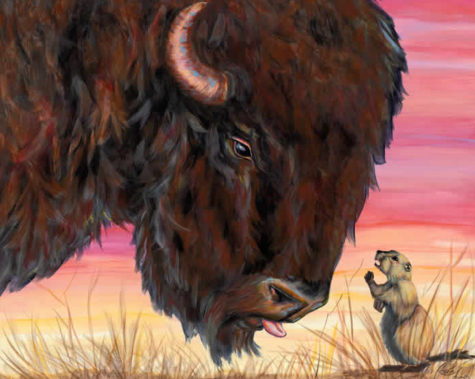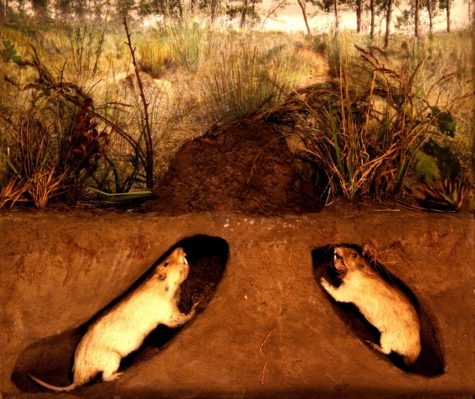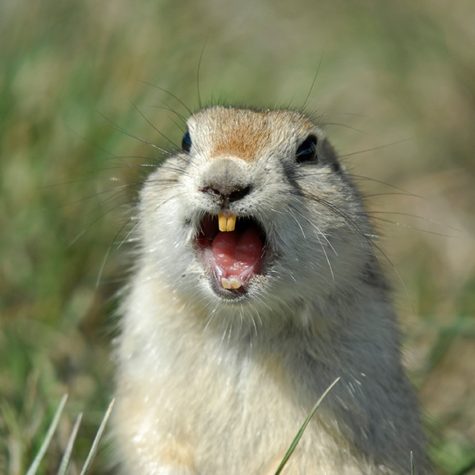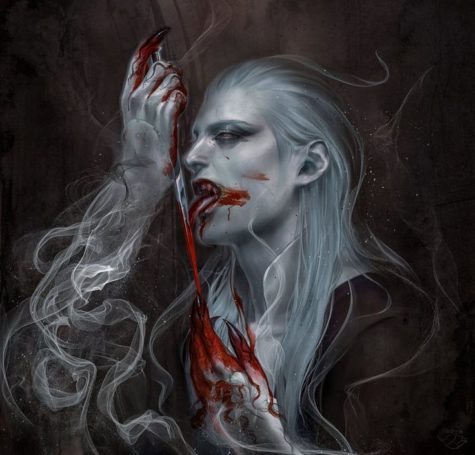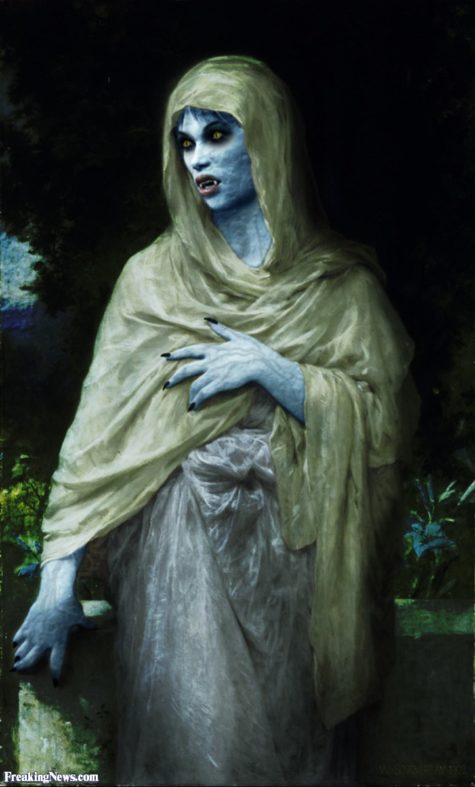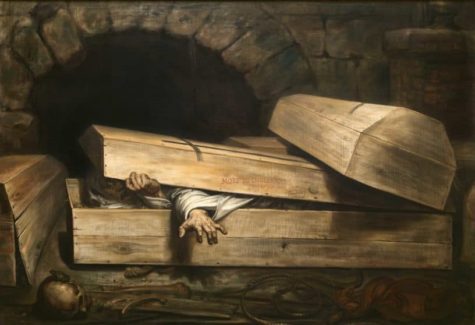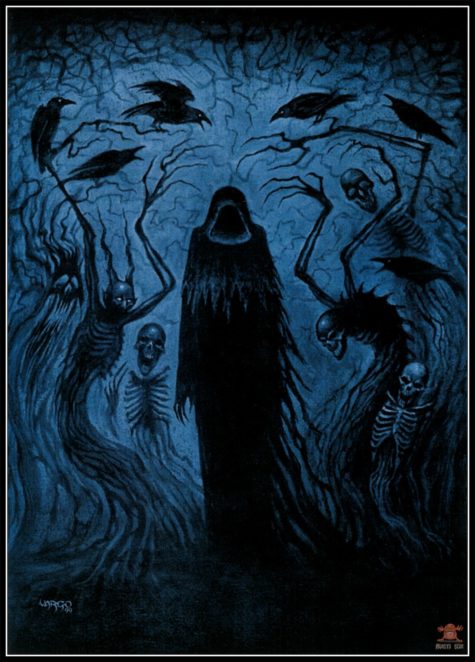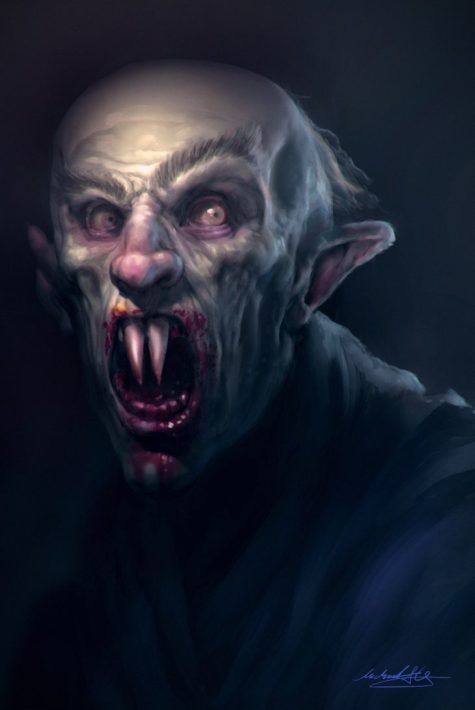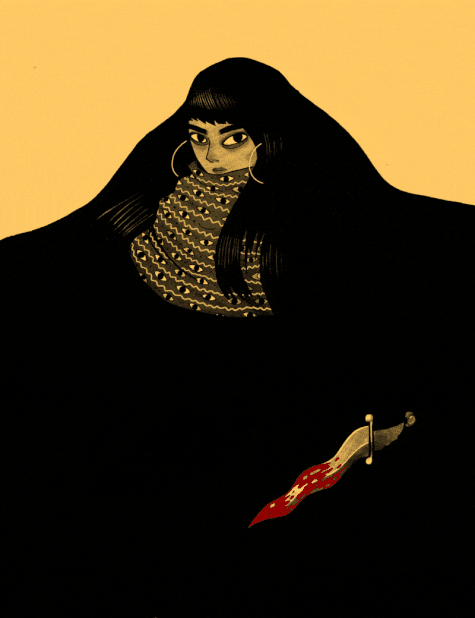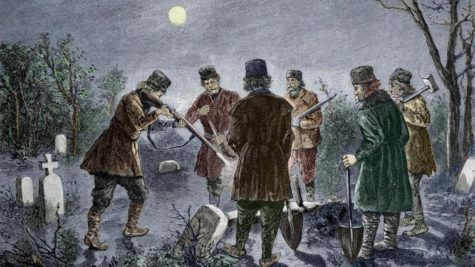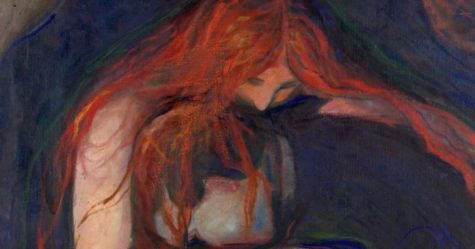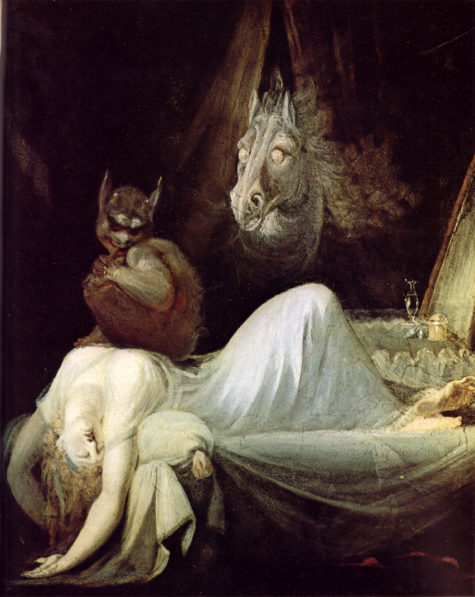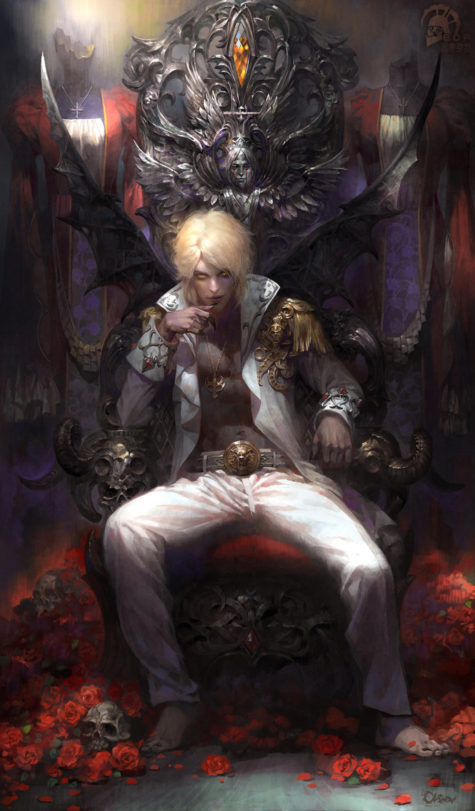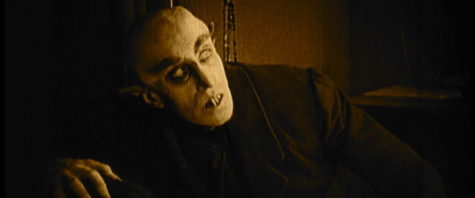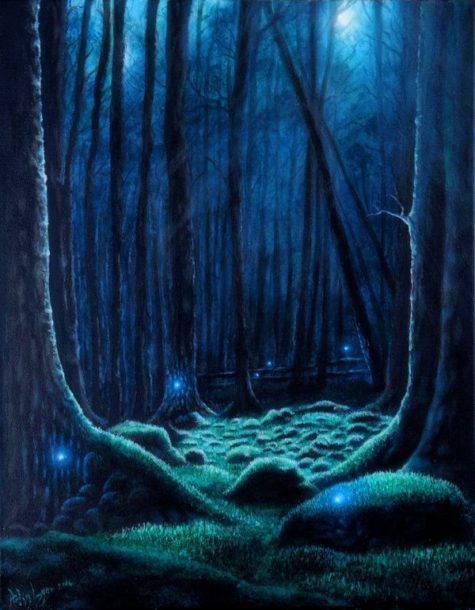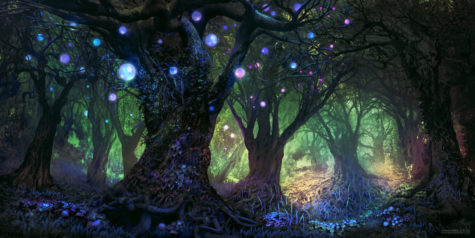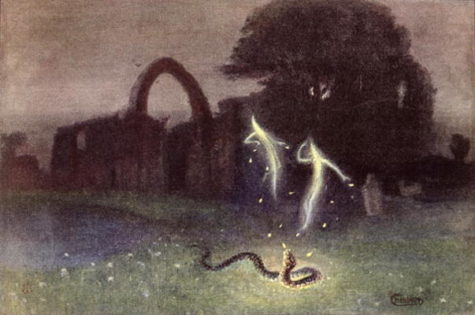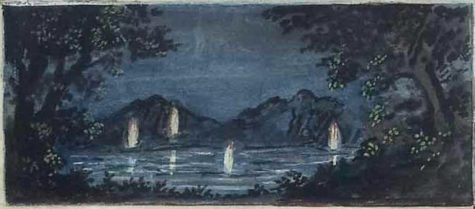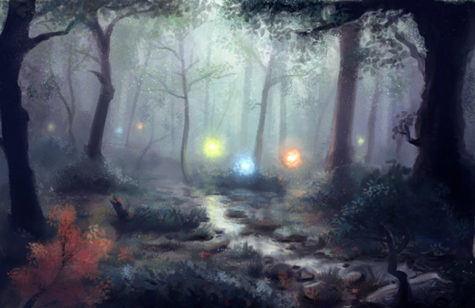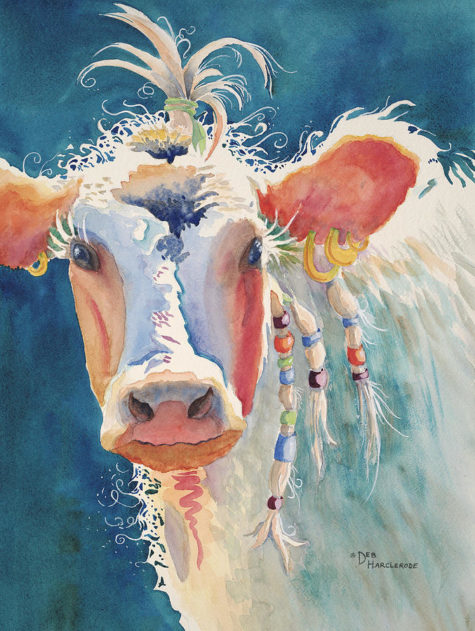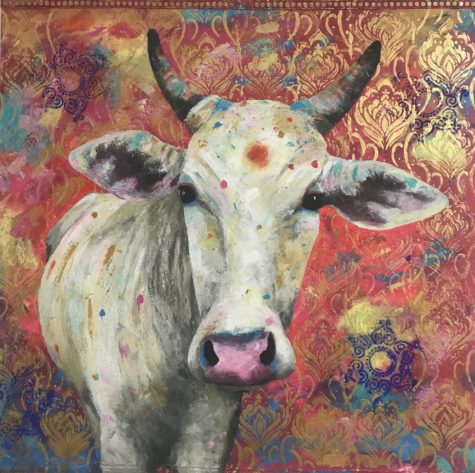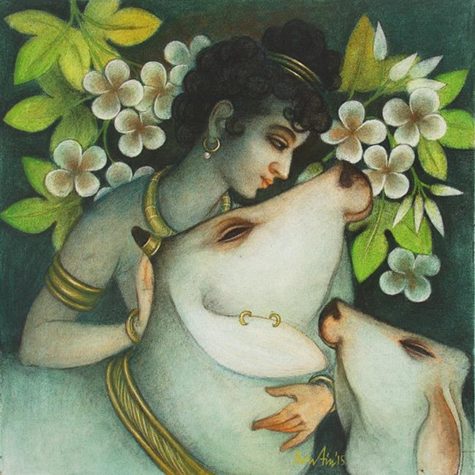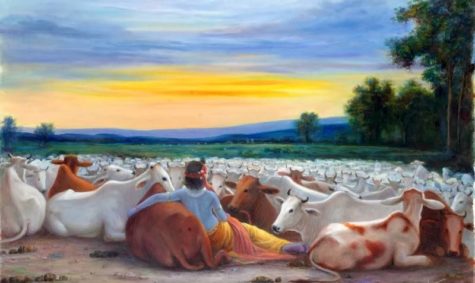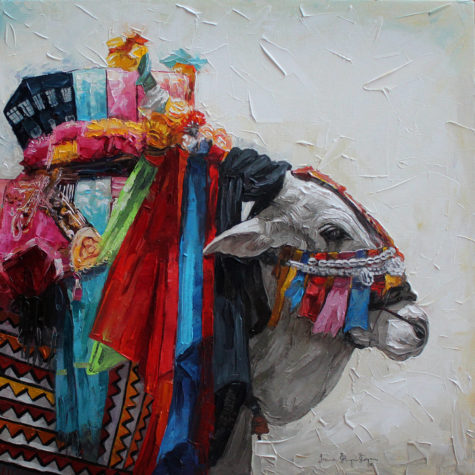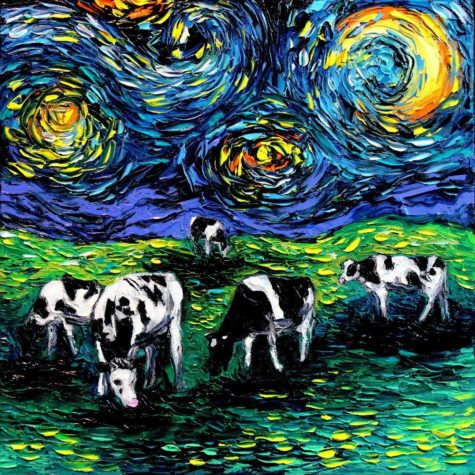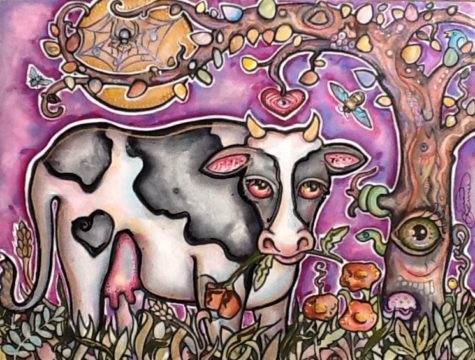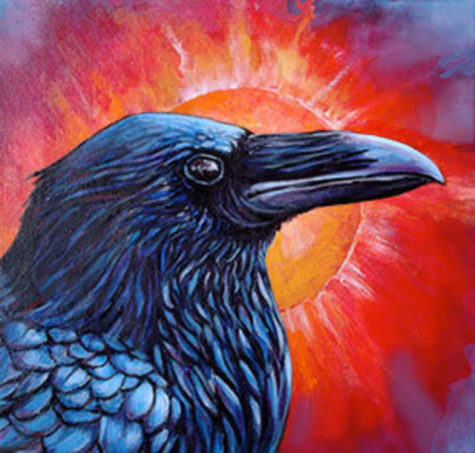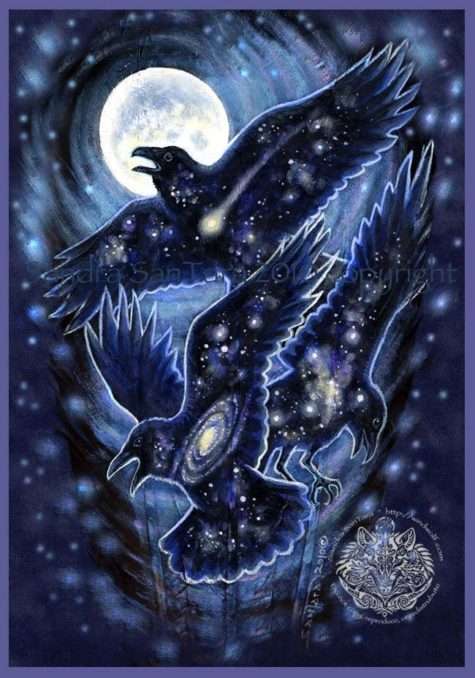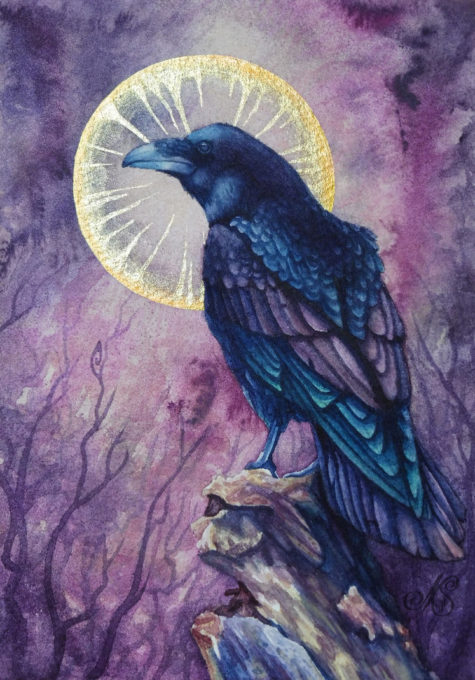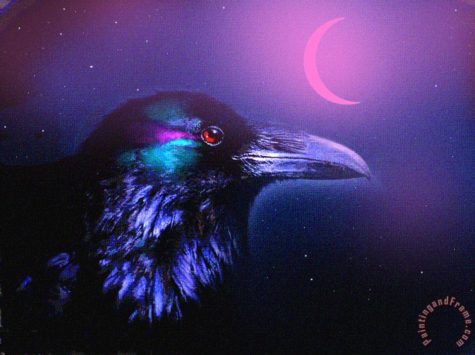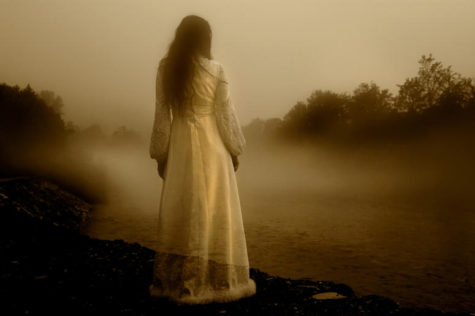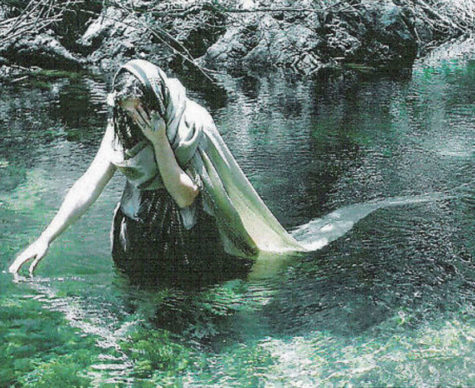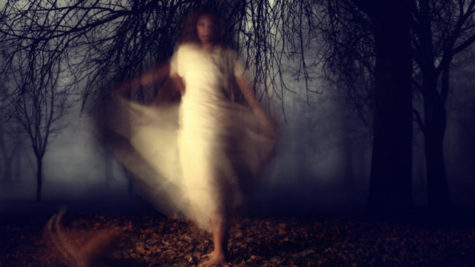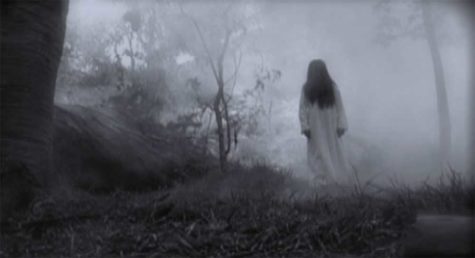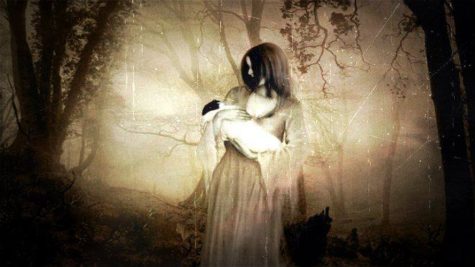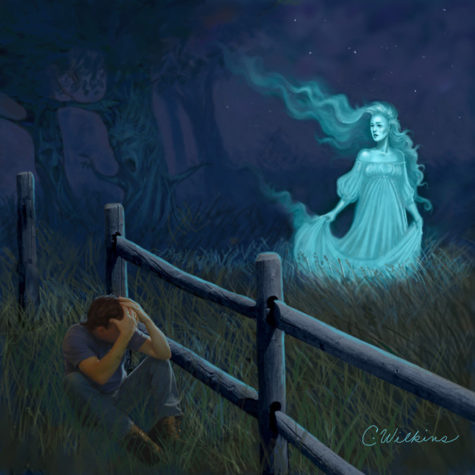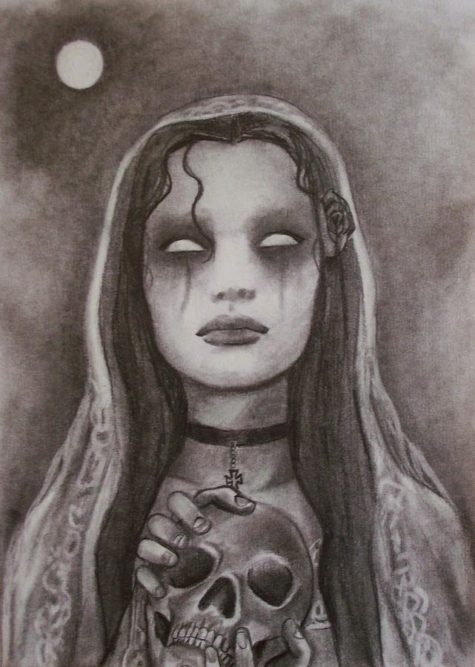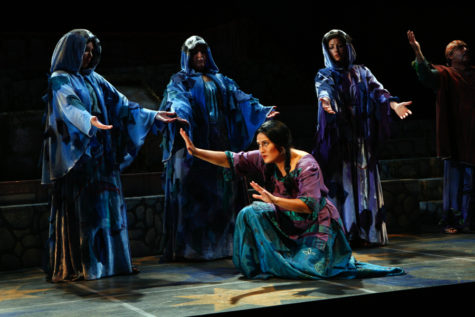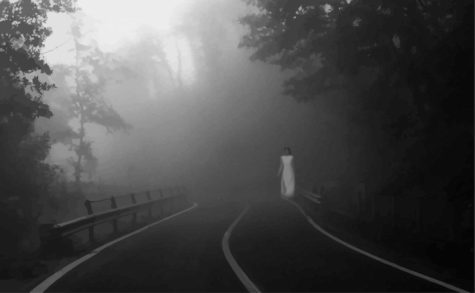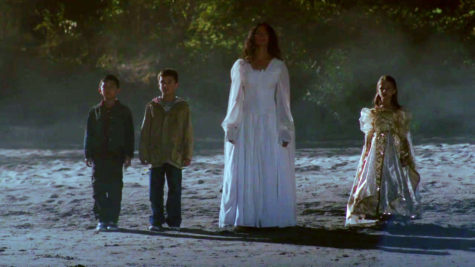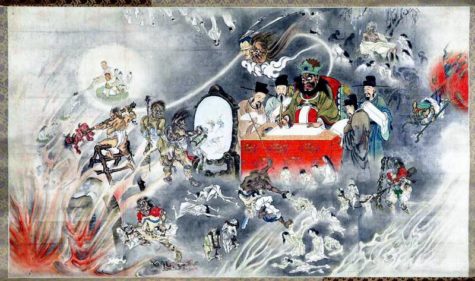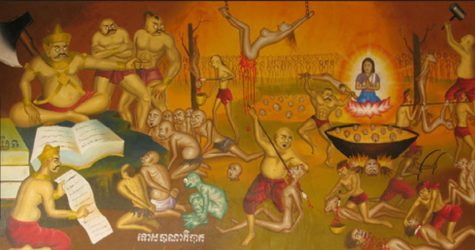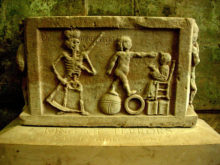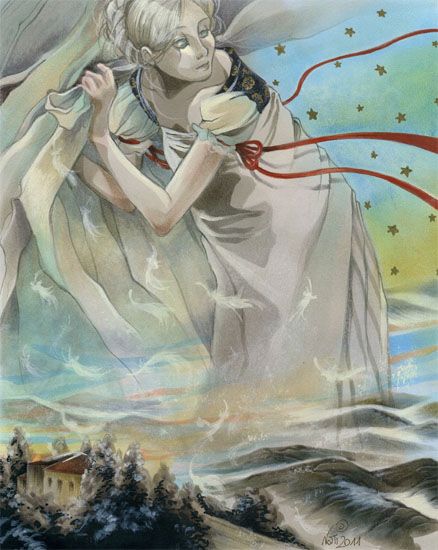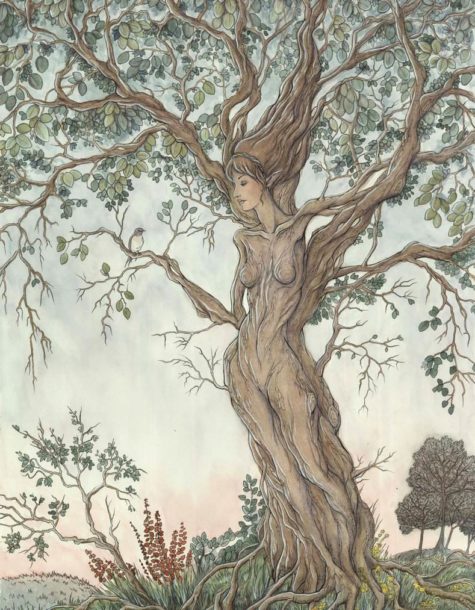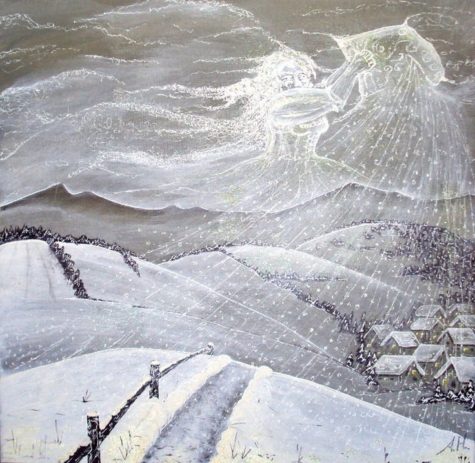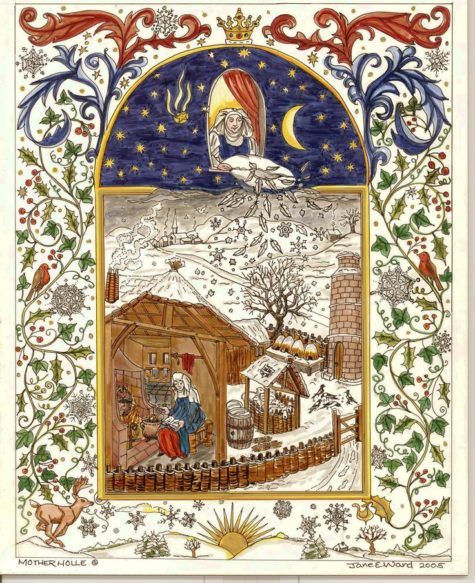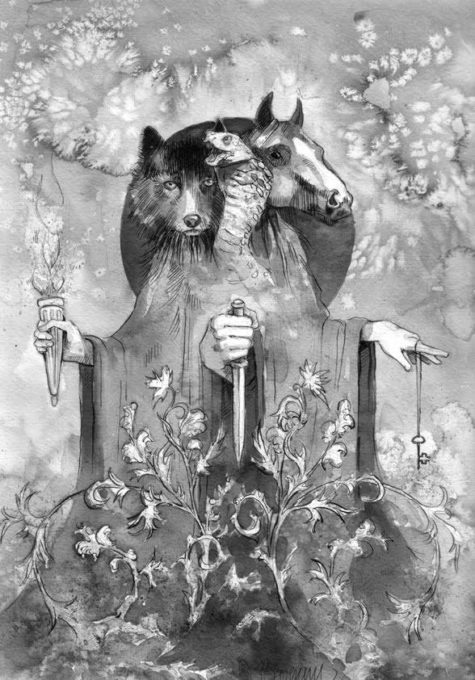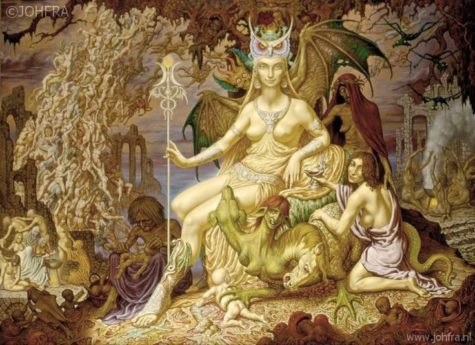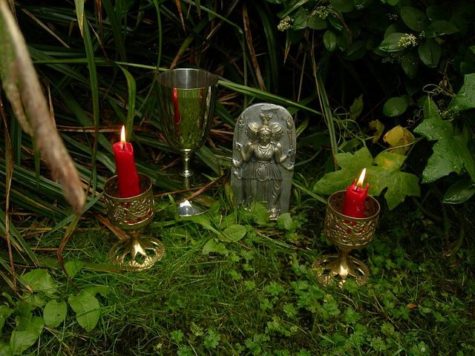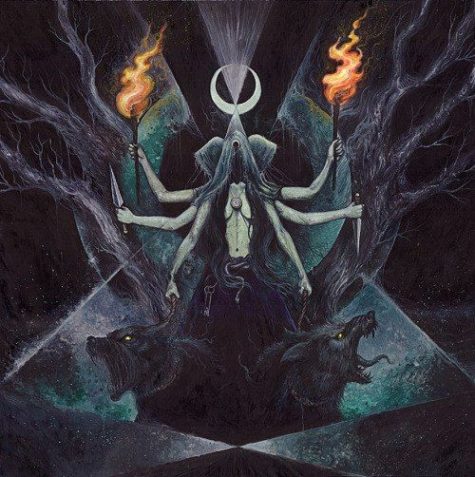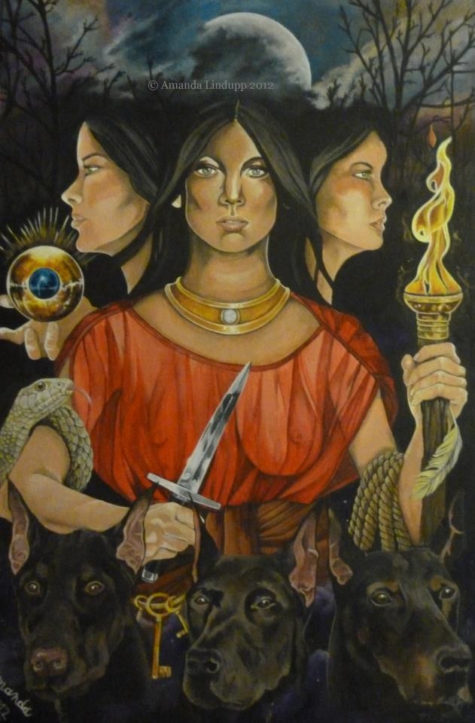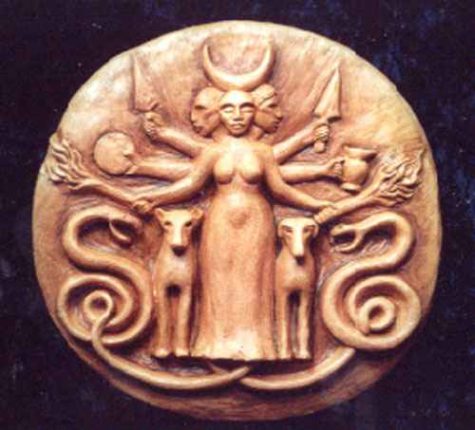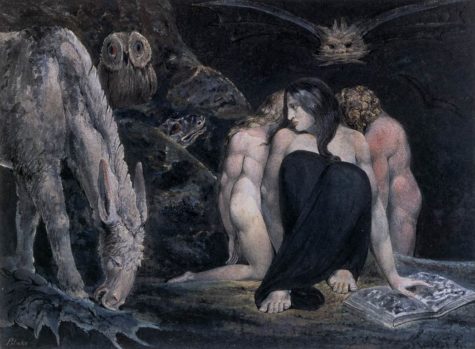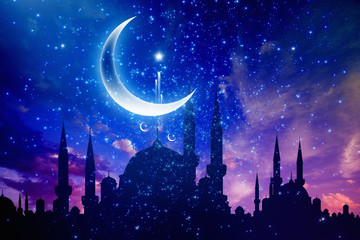Death
Gophers live in colonies and understand the meaning of family and trusting in others. They have a very cool communication between them, which includes speaking in clicks and whistles, as well as with a special ultrasonic whistle for family members.
As a being that lives underground, they are said to be “Secrets of Life” Keepers. They are also known to be Masters of “As above, so below”. They live underground in tunnels that intersect and connect, keeping them safe underground for extended periods of time. But whether life is above ground, or below it, or even in the water, their series of tunnels demonstrate how everything is connected, even though it may be hidden from us.
Gopher is a master at knowing how to dig and uncover hidden truths and meanings and she/he shares this gift with you. Gophers have poor eyesight (in part because of spending a lot of time underground in the dark, and because they are small) so they will keep watch on the tallest point of land in order to be able to see movement so they can warn their colony.
And of course, they are very adept to feeling vibrations in the ground, which is usually why we don’t see them often, as they have advance warning of oncoming visitors. Gopher has beautiful attributes and not to be seen as a pest like many do, as they try to run them off, or worse, from their homes, especially because they love our gardens too.
They feed from their tunnels, pulling down plants and run around with ease and speed, able to jump down small holes instantly. But rather than see them as a nuisance, it would be of more benefit and compassion to observe the Gopher’s wisdom and get more acquainted with what they have to share.
Gopher showing up in your life is asking you to feel all around you and to be present with the vibrations of energy you pick up, are sensing, and intuiting. Their medicine teaches you how to attune yourself to these spiritual and physical vibrations and sensations, as well as teaches abilities to listen, feel, and heighten your intuition to be able to tune into the guidance of direction your innate instincts are leading you to. Then to be do the energy work that what you are feeling is presenting to you.
They bring a message of looking to your own growth process and observing where you plant your seeds, and ask you to take responsibility for your actions instead of adopting a victim role and blaming others. Gopher also helps us develop the skill of uncovering hidden truths and meanings and all that lies beneath a situation, which would include our shadow parts.
He/she also shows us how to listen to and align with perfect timing to take of the many choices available and how those choices are interconnected. Perhaps it is time to “dig” with a sense of purpose and direction or perhaps it is time to utilize your resources that you have before you – because you are more prepared than you realize, but just haven’t trusted yourself enough to just go for it – get it….”go pher” it. 🙂
So our amazing little Gopher friends shows you how to maneuver with purpose and keep the balance of instincts in tune with the heartbeat of our beautiful Earth. Gopher offers us wisdom of deeper truths that are awaiting us to pay attention to and then to follow their flow.
Native American Gopher Mythology
Gophers are considered to be messengers of the underworld by many western tribes, and are sometimes seen as a symbol of death. In some Shoshone and Paiute traditions, gophers were considered medicine animals who could cause or cure sickness in people, and birth defects were said to be the result of pregnant women eating vegetables a gopher had touched.
In Northern California tribes, a gopher digging near a family’s home is thought to be an omen of illness or death; in the Karuk tribe, it was considered bad luck to kill or eat gophers. In Klamath and Modoc mythology, Gopher was the younger brother of the Creator and played a role in the tribal creation myth. Gophers sometimes appear as healers or wise advisors in Native folklore.
Gophers are also used as clan animals in some Native American cultures. Tribes with Gopher Clans include the Hopi tribe (whose Gopher Clan was named Mui-wungwa) and the Pueblo tribes of New Mexico.
Dreaming About Gophers
To see a gopher in your dream means that you are being used and manipulated by others out of survival needs. Below are more gopher related dream interpretations in various contexts.
- Dream About Hitting Gopher
To hit or beat a gopher in the dream, suggests that you should “go for it”. Take initiative and act now to grab that fleeting chance.
- Dream About Gophers Digging
Dreaming about gophers digging in and out of places, reflects the various path that you could take in the near future. These choices are all interconnected and sometimes you simply have to make a judgment call on the best path.
- Dream About Gopher Tunnel
Seeing gophers tunnels signifies the need to maneuver your path while using the balance of your instincts. Always keep your options open and leave yourself with more diverse entrances and exits is key to your survival.
- Dream About Gopher Hiding
To dream about gopher hiding away in its tunnel, represents how you feel unnoticed by others, may it be the good or the bad that you do. The dream suggests that you may need to find ways to stand up for yourself.
- Dream About Catching and Baiting Gopher
Dreaming about setting up traps to try and bait catch gopher, refers to your skill at uncovering hidden truths and meanings. Try to look beneath a situation and figure out the true cause, you will only be able to solve your problems at hand by digging a little deeper and be patient.
- Dream About Gopher Mounds
To see gopher mounds in the dream, represents that you should better utilize the resources you have before you. You might be using resources or assets behind other people’s back. Be careful about the evidences or you would be caught red handed and found guilty.
- Dream About Gopher Destroying Your Garden
Dreaming about your beautiful garden being destroyed or eaten by a gopher, suggests that an employee, contractor, or someone that you work with may be stealing behind your back. However, this generally because you may be underpaying or taking advantage of those whom you work with. They may be forced to take unethical rebates or kickbacks in order to survive.
Gophers vs Groundhogs
Despite their similar appearances and burrowing habits, groundhogs and gophers don’t have a whole lot in common—they don’t even belong to the same family. For example, gophers belong to the family Geomyidae, a group that includes pocket gophers (sometimes referred to as “true” gophers), kangaroo rats, and pocket mice.
Groundhogs, meanwhile, are members of the Sciuridae (meaning shadow-tail) family and belong to the genus Marmota. Marmots are diurnal ground squirrels, Daniel Blumstein, a UCLA biologist and marmot expert, tells Mental Floss. “There are 15 species of marmot, and groundhogs are one of them,” he explains.
Science aside, there are plenty of other visible differences between the two animals. Gophers, for example, have hairless tails, protruding yellow or brownish teeth, and fur-lined cheek pockets for storing food—all traits that make them different from groundhogs. The feet of gophers are often pink, while groundhogs have brown or black feet. And while the tiny gopher tends to weigh around two or so pounds, groundhogs can grow to around 13 pounds.
While both types of rodent eat mostly vegetation, gophers prefer roots and tubers (much to the dismay of gardeners trying to plant new specimens), while groundhogs like vegetation and fruits. This means that the former animals rarely emerge from their burrows, while the latter are more commonly seen out and about.
Groundhogs “have burrows underground they use for safety, and they hibernate in their burrows,” Blumstein says. “They’re active during the day above ground, eating a variety of plants and running back to their burrows to safety. If it’s too hot, they’ll go back into their burrow. If the weather gets crappy, they’ll go back into their burrow during the day as well.”
But that doesn’t necessarily mean that gophers are the more reclusive of the two, as groundhogs famously hibernate during the winter. Gophers, on the other hand, remain active—and wreck lawns—year-round.
“What’s really interesting is if you go to a place where there’s gophers, in the spring, what you’ll see are what is called eskers,” or winding mounds of soil, Blumstein says. “Basically, they dig all winter long through the earth, but then they tunnel through snow, and they leave dirt in these snow tunnels.”
Sources:
No after-death spirit retains as much fascination for the living as does the vampire. Popularly known as the un-dead, many understand vampires to exist on a plane somewhere between the realms of the living and the dead. Are vampires tortured souls of the dead, compelled to feed upon the living? Or are they souls rewarded with eternal life, able to achieve the alchemist’s ultimate fantasy without spending endless hours shut up in a laboratory?
Who or what exactly are vampires? Interpretations differ; “vampire” is a catch-all word that encompasses many concepts. However, one quality is held in common by all vampires: they suck vitality from others.
The most notorious literary and cinematic vampires, like Bram Stoker’s Dracula, Sheridan Le Fanu’s Carmilla, or the inhabitants of Anne Rice’s novels, are blood-suckers. Some vampires kill their victims by draining them of all their blood immediately. More sensuous vampires prolong the process: it isn’t the loss of blood that ultimately kills the victim. The blood is merely the means for the vampire to drain the victim’s life force away?
Another interpretation suggests that a vampire may not be dead at all but a living sorcerer able to send out his or her shadow soul (and recall it when desired) and that this soul is interpreted by others as a vampire.
The Historical Vampire
The concept of vampirism dates back thousands of years. The ancient Greeks, Hebrews, Egyptians and Babylonians all had legends telling hair-raising tales of demon-like un-dead creatures that lived off of the blood of the living.
Tales of the un-dead consuming the blood or flesh of living beings have been found in nearly every culture around the world for many centuries. Today we know these entities predominantly as vampires, but in ancient times, the term vampire did not exist; blood drinking and similar activities were attributed to demons or spirits who would eat flesh and drink blood; even the devil was considered synonymous with the vampire.
Almost every nation has associated blood drinking with some kind of revenant or demon, from the ghouls of Arabia to the goddess Sekhmet of Egypt. Indeed, some of these legends could have given rise to the European folklore, though they are not strictly considered vampires by historians when using today’s definitions.
Hebrews, ancient Greeks, and Romans had tales of demonic entities and blood-drinking spirits which are considered precursors to modern vampires. Despite the occurrence of vampire-like creatures in these ancient civilizations, the folklore for the entity we know today as the vampire originates almost exclusively from early 18th-century Southeastern Europe, particularly Transylvania as verbal traditions of many ethnic groups of the region were recorded and published. In most cases, vampires are revenants of evil beings, suicide victims, or witches, but can also be created by a malevolent spirit possessing a corpse or by being bitten by a vampire itself. Belief in such legends became so rife that in some areas it caused mass hysteria and even public executions of people believed to be vampires.
In India, tales of vetalas, ghoul-like beings that inhabit corpses, are found in old Sanskrit folklore. Although most vetala legends have been compiled in the Baital Pachisi, a prominent story in the Kathasaritsagara tells of King Vikramāditya and his nightly quests to capture an elusive one. The vetala is described as an undead creature who, like the bat associated with modern-day vampirism, hangs upside down on trees found on cremation grounds and cemeteries. Pishacha, the returned spirits of evil-doers or those who died insane, also bear vampiric attributes.
The Hebrew word “Alukah” (literal translation is “leech”) is synonymous with vampirism or vampires, as is “Motetz Dam” (literally, “blood sucker”). Later vampire traditions appear among diaspora Jews in Central Europe, in particular the medieval interpretation of Lilith. In common with vampires, this version of Lilith was held to be able to transform herself into an animal, usually a cat, and charm her victims into believing that she is benevolent or irresistible. However, she and her daughters usually strangle rather than drain victims, and in the Kabbalah, she retains many attributes found in vampires.
A late 17th- or early 18th-century Kabbalah document was found in one of the Ritman library’s copies of Jean de Pauly’s translation of the Zohar. The text contains two amulets, one for male (lazakhar), the other for female (lanekevah). The invocations on the amulets mention Adam, Eve, and Lilith, Chavah Rishonah and the angels—Sanoy, Sansinoy, Smangeluf, Shmari’el, and Hasdi’el. A few lines in Yiddish are shown as dialog between the prophet Elijah and Lilith, in which she has come with a host of demons to kill the mother, take her newborn and “to drink her blood, suck her bones and eat her flesh”. She informs Elijah that she will lose power if someone uses her secret names, which she reveals at the end.
Other Jewish stories depict vampires in a more traditional way. In “The Kiss of Death”, the daughter of the demon king Ashmodai snatches the breath of a man who has betrayed her, strongly reminiscent of a fatal kiss of a vampire. A rare story found in Sefer Hasidim #1465 tells of an old vampire named Astryiah who uses her hair to drain the blood from her victims. A similar tale from the same book describes staking a witch through the heart to ensure she does not come back from the dead to haunt her enemies.
How does one become a vampire?
Although some spirits are believed to be innately vampiric, transcending rhyme or reason, Different traditions cite different causes, some much crueler than others if one considers the implications.
In actual Transylvanian folklore, illegitimate sons, born outside Church-sanctioned marriages, are doomed to become vampires. Ukranian folklore perceives vampires as the inevitable result of sexual relations between witches and werewolves.
And so we find that people can become vampires not only through a bite, but also if the following situations were to occur:
- According to other legends, those born on Christmas Day are potentially future vampires.
- Were an illegitimate child of parents who were illegitimate.
- Died before baptism.
- Anyone who has eaten the flesh of a sheep killed by a wolf.
- If you were the child of a pregnant woman who was looked upon by a vampire.
- You were given inadequate, improper funeral rites.
- If you are a nun who stepped over an unburied body.
- If you had teeth when you were born.
- Or maybe you were once a werewolf.
- You practiced sorcery before your death.
- A cat jumped on your corpse before you were buried (England and Japan).
- A baby born with teeth.
- A stillborn.
- A bat flying over a corpse (Romania).
- Being excommunicated by the Orthodox Church (Greece).
- Being the seventh son of the seventh son.
- A dead body that has been reflected in a mirror.
- Red heads (Greece).
- People who die by suicide or sudden, violent deaths.
- People who were improperly buried; renouncing the Eastern Orthodox religion.
In folklore, the vampire’s first victim would often be his wife. This is why, in some cultures, when a husband died, the wife would change her appearance, i.e. she would cut her hair and would wear black for the entire period of mourning. These things were done with the intention of deceiving the vampire, should he return.
According to some legends, a vampire may engage in sex with his former wife, which often led to pregnancy. In fact, this belief may have provided a convenient explanation as to why a widow, who was supposed to be celibate, became pregnant. The resulting child was called a gloglave (pl. glog) in Bulgarian or vampirdzii in Turkish. Rather than being ostracized, the child was considered a hero who had powers to slay a vampire.
A completely different idea of how vampires are made can be found in this article by J.L.N. Lewitin.
- Intimate infection from a demon:
There is a contagious quality to being a vampire. One vampire infects, initiates and creates another. Having been attacked by a blood-sucking vampire, according to this school of thought, one either becomes a vampire oneself or dies.
When a vampire, or demon, infects a mortal in such a way that they bind with the physical body of the creature, they can often pry the soul out of control of the body and permanently remove it. The power of the demon fuels the initial removal of the soul, as well as the first few hours of action. After this, most vampires will require the blood or soul of other conscious beings. Over time the demon will become more efficient at extracting the energy from these sources, and will require less. However initially, the need will be quite great.
This method of infection can also be transmitted to other conscious beings through the sharing of blood. In this way the demon within the initial vampire can multiply itself. The power of the second vampire will be slightly less then its makers, however over time it will also increase. There is also some speculation that when the initial vampire is destroyed, if the demon is eradicated with it, that all of the vampires born of that demon will also be destroyed.
These vampires tend to be the most powerful, and possess the strongest attributes. This is because the energy of the demon fuels the initial transformation, and the first few hours of existence. The demon also helps the body to become accustomed to its new existence, and can synthesize the souls or blood of other creatures, making it a useable source of energy. They also make it easier for the body to tap into telekinetic, psychic, and magical powers, as well as the new physical power within its body.
- Infection from a virus:
Some viruses can cause a change in the body which destroys it in such a way that the soul fleas, but the physical brain retains some control over the creature’s actions. Initially such beings will be extremely weak and may be mistaken for dead. However, if they gain a source of energy, and a way to synthesize it into something they can use, they may be able to cobble together a consciousness. Their energy source may be the blood or souls of humans, or might be some other form of magic or chemical energy.
These vampires are marked by weakness, and a lack of consciousness. They are often compared to zombies, with the main difference being that vampires do not seam to degenerate after the initial change, while zombies are in a constant state of decline.
- Vampirism by mental disease:
In rare cases a person’s physical mind can become obsessed with the sensual body to such an extent that it begins to revolt against the creatures inner soul. This is usually a violent struggle, and can be very painful and difficult for the victim.
As the soul is removed the creature begins to require alternate sources of energy to fuel its consciousness. In these scenarios, blood or souls are as likely as any other source to become the fuel, as the creature does not possess the ability to synthesize blood into a useable form. Some cases have been observed where vampires of this type become voracious eaters, others draw their energy from fire, and others use magical means to fuel themselves.
Traditional Vampires
Contrary to popular Hollywood movies, blood-sucking vampires tend to be an aberration. Although they did exist prior to Bram Stoker’s incredibly influential best-selling 1897 novell, Dracula, they were rare and very much a product of Gothic fiction.
Traditional folkloric vampires have comparatively little to do with many literary or movie vampires. Vampire traditions exist throughout virtually all of Eastern and Central Europe. Similar sounding words exist in Slavic, Finno-Ugric, and Romance languages. Variations include:
- Upir
- Wampir
- Vampyr
- Upior
Traditionally speaking, vampires are understood as revenants, living corpses of witches, sorcerers, shamans, and/or magickal practitioners who, for one reason or another, rise from the grave. At their most neutral, they are harmful merely because they are not obeying natural laws; at their worst, they rise with the deliberate intent to cause harm.
Although little or no notion of blood-sucking exists in the original conception, that doesn’t mean a vampire isn’t potentially dangerous. Because vampires may be in a liminal state, between life and death, they require life-energy, which is easiest absorbed from the living. However this life force is more likely to be absorbed via sexual energy or siphoning off “chi” rather than sucking blood. From this perspective, Fox Spirits who sexually drain men to the point of death are considered vampiric.
Identifying Vampires
While most people can name several elements of vampire lore, there are no firmly established characteristics. Some vampires are said to be able to turn into bats or wolves; others can’t. Some are said not to cast a reflection, but others do. Holy water and sunlight are said to repel or kill some vampires, but not others. The one universal characteristic is the draining of a vital bodily fluid, typically blood.
One of the reasons that vampires make such successful literary figures is that they have a rich and varied history and folklore. Writers can play with the “rules” while adding, subtracting or changing them to fit whatever story they have in mind.
Finding a vampire is not always easy: according to one Romanian legend you’ll need a 7-year-old boy and a white horse. The boy should be dressed in white, placed upon the horse, and the pair set loose in a graveyard at midday. Watch the horse wander around, and whichever grave is nearest the horse when it finally stops is a vampire’s grave — or it might just have something edible nearby; take your pick.
Often potential revenants, or vampiric spirits, can be identified at birth, usually by some abnormality, some defect, as when a child is born with teeth. Similarly suspicious are children born with an extra nipple (in Romania, for example); with a lack of cartilage in the nose, or a split lower lip (in Russia). When a child is born with a red caul, or amniotic membrane, covering its head, this was regarded throughout much of Europe as presumptive evidence that it is destined to return from the dead.
Banishing and Destroying Vampires
The best way to deal with vampires, of course, is to prevent them from coming back in the first place. A few centuries ago in Europe this was often accomplished by staking suspected vampires in their graves; the idea was to physically pin the vampire to the earth, and the chest was chosen because it’s the trunk of the body.
This tradition was later reflected in popular fiction depicting wooden stakes as dispatching vampires. There was no particular significance to using wood; according to folklore, vampires — like djinn (genies) and many other magical creatures — fear iron, so an iron bar would be even more effective than a wooden stake.
It was also not unusual for a corpse to be buried face down so it would dig down the wrong way and become lost in the earth.
According to several legends, if someone was bitten by a suspected vampire, he or she should drink the ashes of a burned vampire. To prevent an attack, a person should make bread with the blood of vampire and eat it.
Other traditional methods of killing vampires include decapitation and stuffing the severed head’s mouth with garlic or a brick. In fact, suspected vampire graves have been found with just such signs.
If your local villagers neglected to unearth and stake a suspected vampire and he or she has returned from the grave, there are steps you can take to protect yourself.
The exact method varies around the world, but in some traditions the best way to stop a vampire is to carry a small bag of salt with you. If you are being chased, you need only to spill the salt on the ground behind you, at which point the vampire is obligated to stop and count each and every grain before continuing the pursuit. If you don’t have salt handy, some say that any small granules will do, including birdseed or sand. Salt was often placed above and around doorways for the same reason.
In Macedonian tradition, vampires can be prevented from causing harm by scattering millet seed throughout the cemetery. Any passing vampires are compelled to obsessively pick up every tiny seed, leaving them vulnerable to the banishing rays of the sun.
Traditional vampire repellents and banishers include, bright light or sunlight, garlic, hawthorn branches, rowan trees (later used to make crosses), peppermint, onions, a rooster’s crow, silver bullets, iron bells, bullets created from melted down bell metal, thresholds (unless they’re invited in), mirrors, decapitation with a gravedigger’s spade, salt (associated with preservation and purity), running water, fire, and burying a suspected vampire at a crossroads.
Some traditions hold that vampires cannot enter a home unless formally invited in. This may have been an early form of the modern “stranger danger” warnings to children, a scary reminder against inviting unknown people into the house.
Whether crosses and Church-blessed Holy Water also repels vampires or whether this is merely Christian propaganda is subject to debate. That being said, the following might possibly repel or deter a vampire: churches, crucifixes, eucharist water, holy water, Devotees of Japanese anime will recall that those methods have no effect on Vampire Princess Miyu.
To destroy a vampire, you can:
- Burn it.
- Bury the corpse facedown.
- Drive a wooden stake through its heart.
- Pile stones on the grave.
- Put poppy seeds or wild roses on the grave.
- Boil the head in vinegar.
- Place a coin in the mouth and decapitate with an axe.
- Put a lemon in the mouth.
- Bury at a crossroads.
- Remove the heart and cut it in two.
- Put garlic in the mouth and drive a nail through the temple.
- Cut off the toes and drive a nail through the neck.
- Pour boiling oil on the body and drive a nail through the navel.
More more spells and rituals to banish, deter, repel, and possibly even make peace with vampires can be found at the Book of Shadows and Gypsy Magick and Lore.
Metaphorically Speaking
Vampirism can be understood metaphorically as well as literally: that may not be just any old blood the vampire is draining. Menstrual blood may be perceived as symbolizing women’s mysteries and magick powers. The male vampire depicted preying upon a young woman may be perceived as either attempting to appropriate or annihilate her special power.
Literary and cinematic vampires typically possess a sexual element. To some extent that type of vampire combines the blood-sucker with more ancient incubus (male) and succubus (female). Incubi and succubi are spirits, vampiric creatures who suck and drain sexual vitality, often through sexual intercourse, whether actual physical intercourse or through dream hauntings. Although the visitations may occur in dreams, the severe devitalization is apparent upon awakening.
Philosophy of the Vampire
Vampires are born out of a fundamental change which can occur in the physical bodies of creatures which possess a soul. In most mortals the soul is the fundamental source for action, creating the original impulses which eventually become the person’s acts. It is also a passage through which the creature can gain a small amount of the infinite power underlying the universe, power which is necessary for the functioning of a self conscious being.
A vampire is born when a mortal creature undergoes a change which causes the sensual physical body to revolt against the soul, usually expelling it, and taking control of the creature. The actions of the being are then controlled by either the remaining physical brain, the remnant of the soul, whatever caused the expelling of the soul, or a conglomerate of these forces. It is this emphasis on the physical body to the exclusion of the soul, which causes many vampires to be obsessively sensual and addicted to their own suddenly intense perceptions.
There are many things which can cause a creature to become a vampire. These include certain forms of intimate demonic possession, various viruses, the casting of spells to become a vampire, or mental disease. Each of these causes has its own peculiar nature, and can result in very different outcomes for the victim.
The change into a vampire is almost always accompanied by physical changes in the creature’s body. The most common of these is a removal of the ability to feel pain, and a fundamental change in their perception of the world. These are caused by the sudden lack of soul, which influences the way everything looks and feels.
The immortality of the creature comes due to a perceptual change. The body in complete control of itself does not choose to harm itself with entropy, and so stops doing it. However it is the soul which provides a creature with true wisdom and this form of immortality almost always results in major psychological problems. While immortal, eventually almost all vampires end up committing suicide due to the pressure of their own thoughts.
Changes such as an increase in strength, the ability to fly, psychic and telekinetic powers, and magic abilities are fueled by a power source which accompanies the transformation. As such these abilities are dependent on the amount of energy within the being, and will be increased or decreased by this factor.
Energy is a major problem for vampires, who have to fuel a self conscious existence without the benefit of the soul’s pathway to the infinite power source. If a demon initiates the change, then their inherent power will fuel the initial act. If the change occurs due to a mental problem, or a mental problem caused by a virus, then the remnants of the soul and the body itself will have to fuel the initial change. This often results in vampires of very low consciousness and power.
Later energies have to come from another source, as even the initial power of a demon can not fuel a conscious being for long. This power is often gained through the drinking of the blood or souls of other self conscious creatures. Unfortunately the drinking of a soul, or soul blood, will only give a creature a limited amount of energy, requiring that the vampire repeat this act on a regular basis to survive.
The need for energy can become an obsession in vampires, overwhelming any sense of control and self they may have once had. If the need becomes too great, it can utterly destroy whatever mind remains in the creature, turning them into a zombie.
Some experiments have been done with plasma, as well as nuclear and subatomic energy sources as a way of fueling vampires. This technology is still in its infancy however, and most of the vampiric test subjects claim that these methods are still too weak to effectively sustain them.
Weaknesses Of The Vampire
The greatest weakness vampire’s face is their need for energy, often in the form of blood. Since consuming the blood and souls of conscious beings is generally opposed by the conscious beings themselves, vampires have a constant enemy that they are intrinsically tied to. They can’t live with their prey, but they can’t live without them.
If a vampire finds a way to synthesize enough energy to survive, they will usually develop a second problem. As a creature increases its ability to take energy from subtle existences such as life, they will become more sensitive to the energy in the world around them.
Generally if the vampire becomes good enough at synthesizing energy from blood or souls to survive, they will also become so sensitive to energy that sources such as the sun and fire will be extremely harmful to them. This is why many traditional demon induced vampires, who enjoy instant acclimation to vampirism, also suffer from the inability to go out in daylight. However there can be a convergence point for some vampires where they become so good at synthesizing energy that their power increases faster then their bodies sensitive to light and heat, and they become impervious to them once again.
Sources:
- Live Science
- The Pagan Calendar
- Encyclopedia of Spirits
- Element Encyclopedia of 5000 Spells
- Ancient Thoughts
- Thought Catalogue
Will-o’-the-Wisp is the most common English designation for a family of fairy-beings characterized by their fiery appearance and their tendency to lead nighttime wayfarers astray. The term wisp refers to a twist of straw, used as a torch. Other names for these apparitions include:
- Hobby-Lantern
- Jack-o’-Lantern
- Jenny-Burnt-Tale
- Kitty-Candlestick
- Peg-a-Lantern
- Ignis Fatuus
- The Lambent Flame
A Will-o’-the-wisp is a phantom light that hovers in the wilderness, luring travelers away from the beaten path. Most of these lights haunt the moors and bogs of England, but they have been reported all over the world, under various names.
Characteristics and Qualities
Will-o’-the-wisps are very simple apparitions. They appear as balls of light, sometimes so bright that they hurt your eyes and other times so dim that you have to squint to see them. They usually have a blue-ish gleam to them, although red has also been reported.
In some rare sightings, a dark figure has been seen carrying the light, as if it was a torch or a lantern. Despite carrying a light, the figure is always too dark to be described in detail.
A light floating in the darkness might seem innocent, even friendly, but don’t be deceived. These attractive lights are almost always malevolent. They lead travelers onto dangerous land, perhaps a deep hole in a bog or a kingdom ruled by vicious fairies.
Aside from their ability to dazzle and tantalize travelers, Will-o’-the-wisps are also powerful omens. They appear to be able to predict the future, appearing to people before their deaths or flocking to the sight of a tragedy before it takes place. They might also reveal the place where a thief or a fairy has buried golden treasure.
Stories of Will-o’-the-wisps
“A wand’ring fire
Compact of unctuous Vapour, which the Night
Condenses, and the Cold environs round,
Kindled through Agitation to a flame,
Which oft, they say, some Evil Spirit attends,
Hovering and blazing with delusive Light,
Misleads th’ amaz’d Night-Wand’rer from his way
To bogs and mires, and oft through Pond or Pool,
There swallow’d up and lost, from succour far.”
~Milton
- The Original Will O’ the Wisp
The classic Will-o’-the-wisp is carried by a blacksmith named Will. Will was such a troublemaker that, when he died and went to heaven, he was sent back by Saint Peter, who told him to reform during his second life. Unfortunately, Will’s second life was even more monstrous than his first, so Saint Peter cursed him to roam the earth forever. The devil, impressed by Will’s evildoing, gave him a coal to warm himself on the cold earth nights. Instead, Will decided to use the coal to make a torch and lure innocent travelers into danger.
- The Teine Biorach
The will o’ the wisp (called in Gaelic Teine biorach = sharp fire) is said to be of quite modern appearance, at least in South Uist. It was first seen, it is said, in 1812, and is the haunting spirit of a young girl from Benbecula, who frequented the machair, or sandy plain beside the sea, in search of the galium verum, used in the dyeing of the local cloth or tweed.
Her sin was that of seeking to get an undue share of a product which should have been equally divided for the common good, and which has at all times to be husbanded as one of the plants which bind the sandy soil together where it has been redeemed from the sea.
A special interest of this story is that it tells against the common Hebridean tradition of a cold hell, a tradition one soon learns to accept in South Uist, the land of cold mist and sweeping winds, and damp, and drafts, and rain, where even the nether regions with a fire in them have a suggestion of comfort. Hell is therefore discouragingly known as “the place of the wind of the cold passages, or the wind of the cold channels.”
- A Mischievous Gnome
“How Will a’ Wisp misleads night-faring Clowns,
O’er Hills, and sinking Bogs, and pathless Downs.”
~Gay
The will-o’-the-wisp is a mischievous gnome who leads people astray at nighttime or in the fog, causing them to loose their way and end up in a swamp. He does this foremost with inquisitive people who purposely follow him. The best way to avoid him or to render him harmless is to stay away from the footpaths where he has power, and always to keep one foot in a wagon rut. He helps some people who have lost their way by leading them home, if they speak to him kindly and offer him a generous payment.
Once a person who had lost his way offered him two silver groschens if he would lead him home safely. The will-o’-the-wisp agreed, and finally they arrived at the lost man’s house. Happy that he was no longer in need of help, he thanked his guide; but instead of the promised payment, he gave him only a small copper coin. The will-o’-the-wisp accepted it, then asked if he could now find his way home by himself.
He answered, “Yes! I can already see my open front door.” But stepping toward it, he fell into some water, for everything he had seen had been only an illusion.
The will-o’-the-wisp takes special delight in tormenting drunks making their way homeward from a fair or an evening of drinking. He leads them astray, and when in their drunkenness they can go no further, preferring instead to sleep off their binge out of doors, then he burns them on the soles of their feet.
In some regions the people believe that will-o’-the-wisps are the souls of children who died without being baptized. They are seen especially atop graveyard walls. They disappear when one throws a handful of graveyard soil at them.
- Baptizing The Will-o’-the-Wisps
Late one evening a man was walking across a field, returning to Gandshoven from Molenbeek. Suddenly three will-o’-the-wisps came running toward him. Because this good man was accustomed to baptizing such, in order to redeem all three, he said, “I baptize you all in the name of the father and the son and the holy ghost.”
But then it did not go well for him, for in the same instant he saw that he was surrounded by more than a thousand will-o’-the-wisps, all wanting to be baptized. He baptized unceasingly, but ever more of them approached him, and this did not end until the cock crowed. Thus the man had to spend the entire night in the field.
- Will-o’-the-Wisps with Long Legs
A peasant from Hermsdorf, Germany was going home late one evening when he saw a will-o’-the-wisp. Being of a daring nature, he approached it. Without hesitating, the will-o’-the-wisp fled, and the peasant quickly followed after him.
Thick on his heels, he saw that it had tremendously long legs, and that its head consisted of tips of glowing fire. However, it instantly disappeared, and the peasant was barely able to find his way home in the dark.
- Will-o’-the-Wisps Banned with a Curse
In the vicinity of Storkow a preacher was driving home late one evening with his servant. Arriving at a certain place they saw a will-o’-the-wisp approaching them. It hopped about merrily in front of the horses. Soon there were more of them, and finally there were so many of them that the horses took fright and would not continue onward.
The pastor became frightened as well, and therefore he began to pray aloud, but the more he prayed, the more of them came.
Finally the servant said, “No. Stop that. You’re not making them go away. I’ll get rid of them!” With that he shouted, “Go away, in the devil’s name!” and they immediately disappeared.
- The Godorf The Will-o’-the-Wisp
The marshy peninsula which extends between Godorf and Rodenkirchen (in Germany) is said to be the favorite resort of the sprite known all along the Rhine as the Herwisch, and in England as the will-o’-the-wisp. This mischievous little creature is said to delight in leading unsuspecting travelers astray, and in playing all manner of pranks, but, like most practical jokers, he is quick to resent any attempt to make fun of him.
One day a maiden, passing across this stretch of ground at nightfall, began to sing all the songs she knew, to beguile the loneliness of the way and inspire her with courage. Having soon come to the end of her scanty repertoire, she carelessly sang a mocking ditty about the Herwisch, who, enraged at her impudence, came rushing toward her threateningly brandishing his tiny lantern.
With a cry of terror, the girl began to run, closely pursued by the sprite, who, in punishment for her derisive song, napped his wings in her face and frightened her so badly that she became an idiot.
Since then, the young people of Germany have never dared to sing the mocking refrain, and carefully avoid mentioning the Herwisch’s name after nightfall, lest they should in some way arouse his anger.
Related Creatures
In the Britain and Ireland alone, there are dozens of variations of the Will-o’-the-wisp. The most famous are the “Jack-o’-Lantern,” “Peg-a’-Lantern,” “Joan the Wad,” “Jenny with the Lantern,” “Hobbedy’s Lantern”, “Hinky Punk,” and “Spunkies.” They are, for the most part, believed to be carried by souls barred from heaven and hell or by devious fairy-folk.
In the Netherlands, the “Irrbloss,” “Iiekko,” and “Iygtemand” are said to be the souls of un-Baptized children, who try to lead travelers to water, where they can be Baptized. They might also be lights guarding buried treasure, which can only be found using a dead man’s hand or after eating seeds from a magical fern.
In Asia, the “aleya” and the “chir batti” are used by dead souls to mark the place where they died. In other places, goblins, pixies, witches, un-Baptized children, and even the devil are blamed for carrying these dangerous lights.
In Australia, “min min” lights follow travelers once they are spotted. If the traveler turns and tries to follow the light, however, they will never be seen again.
In South America, the “luz mala” and “la candileja” are evil spirits who carry ghost lights after death.
In the United States, ghost hunters prize any photo which has captured an “orb,” a ball of colored light which is believed to reveal the presence of a dead soul in the room. In the swampland of Louisiana, a phantom light called “fifollet” represents dark souls who have been sent back from heaven to do penance on earth.
The Lambent Flame
There was in every hollow
A hundred wrymouthed wisps.
—Dafydd ap Gwilym, 1340
The Will-o’-the-wisp has been recorded as flickering over marshy ground since at least the middle ages, as the quote above testifies. In the centuries that followed, dozens of antiquaries have recorded anecdotes and personal accounts of the ignis fatuus, with even Sir Isaac Newton mentioning them in his 1704 opus Opticks.
The lights have also been incorporated into modern literature, e.g. Dracula, and have even had a children’s television show named after them. The most commonly cited explanation for them is that they’re the product of ignited marsh gas: most likely slowly leaking methane whose ignition is triggered by phosphene (also called phosphine or phosphorus hydride).
Historical and contemporary accounts of these lights, however, often fly in the face of this explanation given that the lights are often seen to move, and to not emit heat.
Some of their synonyms reveal what cultures thought about them: “treasure lights”, of Danish origin, suggests that they are the marking places of treasure; “corpse candles” suggests that they’re the souls of the departed; “fairy lights”, which now mean quite a different thing, suggest that they’re the work of (or indeed are) fairies.
The phenomenon is also inextricably linked with the leading astray of weary travelers into mires. The light was taken to be a lantern or a torch carried by a mischievous spirit, as is indeed reflected in the name Will-o’-the-wisp itself, which has an etymology of “William of the wisp [of lighted hay]”. The man of the lantern was said to play tricks on people, as in the case of the gentleman who was knocked off his horse by the Lantern Man of Horning, Norfolk in the 18th century*.
As quoted by Wilkie (1996), in 1778 William Pryce wrote in Mineralogia Cornubiensis that tinners would use anomalous light forms to find veins of tin: “another way of finding veins […] is by igneous appearances of fiery coruscations. The Tinners generally compare these effluvia to blazing stars.”
The westcountry seems to have held the phenomenon in generally high regard, in fact, for Dr. Jonathan Couch (or his son, Thomas Quiller-Couch) quotes a poem* in his History of Polperro that is reminiscent of the practice of using foxfire to guide one back home through forest:
Jack o’ the lantern! Joan the wad,
Who tickled the maid and made her mad;
Light me home, the weather’s bad.
Explanations of the Myth
Although they may not be trapped in lanterns held by the devil or hover over sunken fairy gold, Will-o’-the-wisps are a very real phenomenon. These mysterious lights do exist, and for a long time, they could only be explained through superstition.
Today, science has a few explanations (which don’t involve ghosts, devils, witches, or fairies) for the lights.
Some scientists believe that the light is produced by a type of bioluminescent fungus or algae that grows in marshy areas. Just like fireflies or angler fish, these plants could undergo a unique chemical process to produce light.
Still more scientists claim that a mixture of gases is responsible for the lights. In marshes, plant material often sinks underwater before it can decompose. In the water, the material undergoes an unusual type of decomposition, which releases methane, carbon dioxide, nitrogen, and phosphines into the air. Methane is a highly flammable gas, and phosphines have been known to spontaneously combust when they come into contact with air. Combine these two chemicals, and you could easily produce a burning ball of light hovering above a marsh.
Sources:
Because of its milk that is a staple food for many human beings, the Cow is arguably one of the most useful animals in the world. It was one of the first animals domesticated by humans, and its symbolic importance is rich. It is emblematic of fertility, abundance, wealth, the universal Mother, and of rebirth. The Cow is also a gentle and compliant creature.
In Vedic literature the Cow is also a symbol of abundance and fertility as it represents both earth and sky. To Hindus and Buddhists, symbolism of the Cow deals with patience and holiness.It is considered India’s most sacred animal. The calm, tender nature of the Cow wins this right among the Buddhists.
The Cow as a sacred animal is a fundamental part of Hindu iconography. In India the Cow is so revered, and treated so gently, that it often causes a traffic hazard as it ambles along busy city roads. There are several reasons for the sacred status given to the creature. Not only does the Hindu faith have respect for all animals (vegetarianism is a tenet of the faith), but the God Krishna was a cowherd for a time, and one of his names is Bala Gopala, “the child who protects the cows.”
Hindu deities rule over each and every part of the Cow. During times of famine, the Cow is far more useful as a creature that can produce limitless amounts of milk, then as a dead beast that would provide meat for a limited period only.
In Egypt the Cow was personified as Ahet, the mother of the Sun itself. To make themselves fertile Egyptian women wore amulets of the Goddess Hathor, with the head of a Cow, in her guise as the Creator.
In Norse mythology the Cow makes an appearance as Audhumla, the mother-ancestor of all living things, whose utters emitted the four rivers of power – these provided nourishment for the giants (primarily the first giant, Ymir) that ruled the First World.
In Celtic mythology the Cow is sacred to the Mother Goddess Brigit who also governs the Earth, mothers, children, health, nurturing, providence, and the full range of the Female element of the universe. This symbolism remains consistent with that of many other cultural settings and supports Cow as representing life’s fragile beginnings and the necessity to safeguard and restore those who have no voice or support.
In Greek myth, one of the names for the great Cow was Europa, which means “full Moon.” The stars were said to be the children of Europa.
In Lancashire folk-speech, the name “cow’s lane” was sometimes given to the Milky Way, the traditional path of souls, as it was also in some parts of Germany. This may be connected with the old north European belief that whoever gave a cow to the poor during his life would be guided by that cow along the perilous soul-road after his death, and so would be sure of reaching Heaven in safety.
Once, there was a custom whereby the cow was brought to the sickroom, and in what must have been a distressing and rather frightening ritual, the dying person was encouraged to grasp the tail of the cow as he breathed a last breath.
This psychopomp aspect of the Cow is still celebrated in the Nepali festival called the Gai Jatra or Cow Festival. In a boisterous celebration, every family that has lost a member during the course of the year has to take part in a procession, leading a Cow, or if no animal is available, then a child dressed in a cow costume is considered to be a fair substitute. The Cow is believed to guide the soul on its final journey, including a voyage through the Milky Way, the constellations of stars said to be the milk splashed by the great Cow that was the mother of the Universe.
Red cows appear in some pagan creeds as personifications of the dawn, or clouds, or lightning. It is possible that they had some special significance for the ancient Hebrews also, since it is definitely stated in Numbers 19:1 that the victim offered for the purification of the people must be “a red heifer without spot, wherein is no blemish, and upon which never came yoke.”
In England the milk of a red cow was formerly supposed to be superior to any other, and to have healing properties. Such milk is often specifically mentioned in 17th and 18th century medical books as an essential part of remedies for various ills, particularly for consumption and chest ailments. Red is, of course, a life-giving color in mythology and folk tradition alike because it is associated with fire and with blood, and red objects of various kinds figure constantly in healing charms and folk remedies.
According to a French legend, Cows always have a sweet breath because when Our Lord was born in the stable at Bethlehem, a Cow, seeing Him shivering in the cold, warmed Him with her breath and drew the hay over Him with her lips. As a reward for this act of kindness, she was promised that her breath, and that of all her descendants, should ever afterwards be sweet, and in addition, she was given the privilege of carrying her calf for nine months, like a Christian woman with a soul to be saved.
Cow Symbolism
The Cow is a lunar symbol, aligning itself with feminine (yin) qualities among the Chinese yin-yang energies. A quick-list of Animal symbolism of the Cow would include:
- Patience
- Nourishment
- Abundance
- Fertility
- Female Power
- Potential
- Possibility
- Calming
- Grounded
- Provision
- Beginnings
Because you’re seeking out Cow symbolism and meaning, a deep stirring must be happening in your soul. Cows represent motherhood, Mother Gaia, and the Mother Goddesses. Take time to meditate on all Mother Cow has to offer. She is a sacred reminder of fertility, birth, and nurturing.
- When Cow appears as your Spirit Animal trust that the mighty storm will pass and you’ll be OK.
- Cow as a Totem Animal belongs to those with profound Mother Goddess instincts.
- Call in Cow as your Power Animal when your soul needs TLC.
The Cow Totem
Those who know Cow as their Totem Animal supply a sense of stability and solid, loving, growth-oriented relationships with self, others and the environment.
Cow people have the ultimate “mother’s intuition.” They can feel when others are out of sorts – when their auras are “scratchy” – and they always seem to know just what to say or do to help. Somehow, folks heal more quickly when in the company of Cow Totem Animal people.
If Cow is your Totem Animal, always remember that one cannot feed others from an empty trough. Though you were born with the natural instinct to take care of the world, YOU are part of it. Your needs are just as important as everyone else’s. A wise Cow mama know when to take a break and nourish her own mind, body, and spirit.
We should always work to have a positive and happy home environment. If we don’t, we should inquire deep within as to how we can change that. Calling upon the Cow animal totem, we can learn how to make basic changes that are needed to balance the joys in our surroundings.
Like its family member the bull, the Cow totem is highly connected to nature, the Earth, and its continuation through reproduction. Cows are very generous with their lives and behave in the most selfless of manners.
Among fertility and femininity, these mother creatures represent the virtuous traits of sustenance, abundance, potential, calming, grounding, and provision. They also serve as an uplifting sign of female power and prestige, since they are, after all, crucial to the continuation of any species.
New beginnings are also a theme associated with Cows in conjunction with their maternal auras. Through their pregnancy, birth, nourishment to their offspring, and ultimate bodily gifts, Cows show the entire life cycle in its bittersweet beauty from start to finish.
The female Cow totem is linked to its male counterpart, the bull, through the symbolism of fertility and reproduction. While the male totem exemplifies nourishment through its slaughter or sacrifice, a Cow symbolizes birth and motherhood.
Cow symbolism assists us in understanding and embracing fertility and the relationships necessary for it. It is a soft and nurturing creature that arouses the soft side in each of us. The two animals are directly connected, as they are both needed to create new life.
These animals illustrate both the masculine and feminine qualities that exist in every being. The bull is characterized by bold and rigid energies, while the Cow is far more gentle and tranquil. They remind us to constantly ensure that these energies are in harmonious balance.
Cows As Spirit Guides
The Cow is a very powerful Spirit Animal. While at first you might wonder about the value of such a guide in your life, there is much about Cow to respect.
Like many other animals, Cows as spirit guides have been revered in various religions and cultures around the world. In ancient Egyptian astrology, the Cow served several symbolic purposes, including being worshiped as the goddess of joy and maternal nourisher of all things.
Additionally, they remind us to nourish ourselves physically, mentally, and emotionally. If we neglect the basics of our lives, it will be impossible for us to live happily and thrive. Every day, you should ask yourself if you are eating the right foods, drinking enough water, and exercising both your body and your mind to remain healthy and alert.
Cow reaches out to those struggling with fertility offering motherly advice. You may not always like what Cow tells you (did you like everything your mother told you?), but the heart behind the Cow Spirit Animal is truly one of giving. She always wants what is best for both you and your proverbial herd.
When weathering a storm, be it emotional or physical, turn to Cow as your animal spirit guide and think of how firm Cows stand in vile weather. There is no moving a Cow and no influencing it, but for urgent matters of hearth and heart. Nonetheless, as you stand in your place of power, remember that Cow also gives you keen perceptions. Be on the alert for possibilities or potential peril.
If your spiritual path is working toward the greatest good, Cow guidance is a fantastic helpmate. She will stay with you compassionately with watchfulness, making sure you stay inside the spiritual boundaries you’ve set.
Cows are lunar, divine feminine energy. If you’ve ever looked into a Cow’s luminous eyes it’s easy to feel how loving they truly are. But, as soft and magickal as moonlight is, never forget it is the moon which is mighty enough to influence all the waters of the earth. The divine feminine is just like that. Pliable and giving, but it should never be mistaken for weak.
Cows are a simple creature that get their joys from life’s basic pleasures. From this, they aid us aid us in remembering to be easy going and live in the moment. Often times, we ignore the innocent and plain moments that make our lives wonderful.
If we can manage to clearly assess our lives, we will be reminded to thank our family members and those close to us for all that they do to make our lives joyful. Simply appreciating your community can change your mentality greatly, having positive effects on both your outlook and your body.
One of the Cow symbol’s main spiritual messages is to never take this for granted, for eventually this life will end.
Cow As A Power Animal
If you want to have children, consider carrying a carved Cow totem and invoke Cow as your Power Animal. Cows are powerful symbols of new life. That life need not necessarily be as a parent however. It can apply to new jobs, new homes, and new relationships.
Keep a Cow totem on hand when you need protection from negativity or nightmares. Like the Mother Goddess herself, Cow energy holds you close, reassuring that nothing will harm you.
As a power animal Cow calls on you to love fully. Look at the world and the wonders of creation and let that fill you with all the characteristics you most need to embrace life.
Note, however, that this power animal will not let you give and give and give without refilling. Those that serve need service, including you. Put out a cattle call and let people give back (it blesses them too).
Dreaming About Cows
Lessons of gratitude and the appreciation of sacrifice are prevalent in cow symbolism, especially when presented in our dreams, and we would do well to integrate them into our daily life.
A cow dream symbolizes some important issues. In Hindu culture, cows are sacred and represent fertility, nourishment, and motherhood. Cows also represent personality traits such as passivity and overall contentment. Seeing a cow in a dream is usually a positive thing, with the appearance of grazing cows, in particular, representing happiness and prosperity. Some ancient societies and some tribal societies measure a person’s wealth by how many cows he or she has.
The dream cow indicates that you obey authority figures without questioning them. It may represent maternal feelings or a desire within you to be taken care of. If you see a herd of cows in your dream, it suggests that you have a strong need to belong to a group. A herd of cows may also mean that you have a group of close friends that you enjoy. If the herd was disturbed or anxious in some way, it means that something or someone may be acting on your group of friends in such a way as to cause trouble and pull the group apart.
Dreaming of a field full of Cows portends improved finances or potentially a multiple birth in the family. A Cow grazing happily speaks of joy and contentment in the home. If the Cow represents self, it’s a signal that you need nurturing and spiritual nourishment.
The appearance of a cow with the face of a skeleton in your dream means that your mother or some mother figure in your life is acting coldly toward you or not responding to your needs. If you dream of cow with a calf, this is always a positive sign.
If you dream of being a cow, this suggests that you are afraid of being stupid. Dreaming of a sick cow suggests that some plans you’ve made for the future are threatened and require some action from you to avoid problems.
Because cows often represent motherhood, they are also representative of the feminine part of a man’s psyche. If you are a man, the dream of a cow suggests that you recognize this part of yourself and incorporate it into your life in order to attain greater psychological balance overall.
Dreams of cows are symbolic of peace, passivity, endurance, mothering, and humility.
Superstitions About Cows
An old English superstition says that cows kneel down on Christmas Eve and pay homage to Jesus. They speak in human voices, but anyone who hears them will die before being able to tell anyone about it.
Old farmers say that every herd has a “master cow” which leads the others into mischief. If a cow lows after midnight, it is a death omen for someone in the neighborhood, and similarly, if a cow lows three times in a man’s face, he has not long to live.
If a cow licks the forehead of another cow, it is a sign that their owner is about to die. It is also a sign of imminent death if a cow enters your property. Three cows means three deaths. Yet another reason for keeping your gates closed, especially if you live in the country!
It is important to wash your hands thoroughly after milking a cow. If you don’t, you will receive no milk on the following day.
- Cows that eat buttercups produce tastier butter.
- When out in the field an upright Cow tail foretells rain.
A cow’s breath is believed to have health-giving properties and people suffering from tuberculosis were at one time encouraged to sleep with the cattle.
If separating a calf from its mother, you should take a calf out of the barn backwards to prevent its mother mourning the loss of her child.
In Ireland a hare appearing with Cows on Beltane signify witches who are up to no good stealing away with fresh milk. The Scots believed that putting tar behind the Cows’ ears would keep the witch from succeeding.
Witches were also believed to be able to steal the milk of cows from a distance by means of a magical tether, the strands of which were plaited the wrong way. They could do the same by going through the motions of milking with a rope, or a pot-hook, or the legs of a stool, and sometimes they came in the form of hares and sucked the udders of cows lying out in the fields. When the true milking-time came around, such bewitched animals would give only a poor supply or no milk at all.
Various charms were used to counteract these thefts, one of which was to make the rope used to tether the animals’ feet out of horsehair, and to thrust a stick of rowan, or some other magickal wood, through it.
In an article in Folk-Lore (1895), a story is told about a Bernera farmer whose cows gave so little milk that he was sure they were bewitched. He used such a rope, with excellent results; but as soon as the cows were released, they all rushed to a certain woman’s house and began tossing at the walls. This was regarded by the local people as clear proof that the woman had previously bewitched them, and so strong was the feeling against her on this account that she had to leave the district.
In Discourse on Sympathy (1658) an old country belief is recorded that if milk boiled over and fell on the fire, salt must immediately be thrown on the place where it fell. If this was not done, the cow which gave it would suffer from an ulcerated udder.
Sources:
- Animal Speak by Ted Andrews
- What Is My Spirit Animal?
- The Encyclopedia of Superstitions
- Element Encyclopedia of Secret Signs and Symbols
- What’s Your Sign
The winter solstice and winter season is the time of greatest power for those with the raven as a totem. The solstice is the shortest day of the year The sun shines the least on this day, thus it is the darkest. From that day forth, the light shines a little more each day This is symbolic of the influence of raven. It teaches how to go into the dark and bring forth the light. With each trip in, we develop the ability to bring more light out. This is creation.
CHANT
Wing so black it shines like Moon at midnight,
O Raven, strong, hear my cry!
Teach me old magick, powerful, bold,
O Raven, eloquent and wise.
The Raven’s keynote is that of magic, shapeshifting, and creation. While its cycle of power is that of winter solstice. The raven is one of those birds that has a tremendous amount of lore and mythology surrounding it, and it is often contradictory. It is a bird of birth and death, and it is a bird of mysticism and magic.
In the near East, the raven was considered unclean because it is a scavenger. It is one of the foods listed as forbidden in the Bible. The raven is one of the birds that Noah sent out after the floods, but it did not return to the ark. On the other hand, also in Biblical lore is the tale of how a raven fed the prophet Elijah when hiding from King Ahab.
In Scandinavian lore, the raven played a significant role. The Norse god Odin had a pair of ravens who were his messengers. Their names were Hugin (thought)and Munin (memory). Odin was known to shapeshift as a raven himself. This reflects the idea of raven being a messenger of the great spiritual realm.
In the Middle Ages the croak of the raven was believed to foretell a death or the outcome of a battle. It was even taught to the common folk in Christian communities that wicked priests became ravens when they died. Even today, some old timers tell how you can expect hot weather when a raven is seen facing a clouded sun.
The raven is a member of the corvids family, to which belong crows and magpies and other such birds. In truth, the only really significant difference between the crow and the raven is in size, the raven being much larger. It would be beneficial to study the information on the crow for anyone who has a raven as a totem. Much of the same information that applies to one, also applies to the other. It is simply a matter of degree. Rather than repeat that information here, I would like to give you some information not generally associated with the crow itself.
The raven has a wealth of myth and lore surrounding it. In many ways it is comparable to the coyote tales of the plains Indians, the Bushmen tales of the mantis and other societies in which an animal plays both a significant and yet confusing role. The coyote was both trickster and wise being-fool and wise one. This was true of the mantis in the tales of the Kalahari Bushmen.
In the Pacific Northwest the raven has this same aura about him. In the Pacific Northwest, raven brought forth life and order Raven stole the sunlight from one who would keep the world in darkness. Nothing could exist without raven. Raven is honored in art and on totem poles, reflecting the tales and mysticism that have developed around it.
With raven, human and animal spirits intermingle and become as one. This is reflected in its deep, rich shiny black. In blackness, everything mingles until drawn forth, out into the light. Because of this, raven can help you shapeshift your life or your being. Raven has the knowledge of how to become other animals and how to speak their languages.
Ravens are great at vocalizations, and they can be taught to speak. They incorporate and mimic the calls of other species. In the Northwest are tales of the Kwakiutl Indians who offered the afterbirth of male newborns to Raven so that when they grew up, they would understand their cries. Raven can teach you to understand the language of animals.
Ravens are playful, and they are excellent tool users. They will use stones and anything else that is available to help them crack nuts and such. They are birds not intimidated by others, and they are very fast and wary Because of this, they are not easy prey for other animals or birds. This implies the ability to teach you how to stir the magic of life without fear They are also known for their amorous behavior, reflecting the strong creative life force to which they have access.
This creative life force can be used to work the magic of spiritual laws upon the physical plane. It can be used to go into the void and stir the energies to manifest that which you most need. All this and more is what raven teaches. If raven has come into your life, expect magic. Somewhere in your life, magic is at play Raven activates the energy of magic, linking it with your will and intention.
Raven speaks of the opportunity to become the magician and/or enchantress of your life. Each of us has a magician within, and it is Raven which can show us how to bring that part of us out of the dark into the light. Raven speaks of messages from the spirit realm that can shapeshift your life dramatically Raven teaches how to take that which is unformed and give it the form you desire.
~Ted Andrews – Animal Speak
The legend of La Llorona (pronounced “LAH yoh ROH nah”), Spanish for the Weeping Woman, has been a part of Hispanic culture in the Southwest since the days of the conquistadors. The tall, thin spirit is said to be blessed with natural beauty and long flowing black hair. Wearing a white gown, she roams the rivers and creeks, wailing into the night and searching for children to drag, screaming to a watery grave.
No one really knows when the legend of La Llorona began or, from where it originated. Though the tales vary from source to source, the one common thread is that she is the spirit is of a doomed mother who drowned her children and now spends eternity searching for them in rivers and lakes.
La Llorona is a legendary figure with various incarnations. She is often presented as a banshee-type: an apparition of a woman dressed in white, often found by lakes or rivers, sometimes at crossroads, who cries into the night for her lost children, whom she has killed.
The infanticide is sometimes carried out with a knife or dagger, but very often the children have been drowned. Her crime is usually committed in a fit of madness after having found out about an unfaithful lover or husband who leaves her to marry a woman of higher status. After realizing what she has done, she usually kills herself.
She is often described as a lost soul, doomed to wander the earth forever.
The legend of La Llorona persists in areas where mountain lions are active. The Audubon Field Guide to North American Mammals notes that the mountain lion’s “blood curdling mating call has been likened to a woman’s scream.
The Legend:
The legend is said that in a rural village there lived a young woman named Maria. Maria came from a poor family but was known around her village for her beauty. One day, an extremely wealthy nobleman traveled through her village. He stopped in his tracks when he saw Maria. Maria was charmed by him and he was charmed by her beauty, so when he proposed to her, she immediately accepted. Maria’s family was thrilled that she was marrying into a wealthy family, but the nobleman’s father was extremely disappointed that his son was marrying into poverty.
Maria and her new husband built a house in the village to be away from his disapproving father. Eventually Maria gave birth to twins: a boy and a girl. Her husband was always traveling, and stopped spending time with his family. When he came home, he only paid attention to the children and Maria knew her husband was falling out of love with her. One day, he left and never returned.
Years later, as Maria and her twins were walking by a river, she saw a familiar carriage with a younger, beautiful woman next to her husband. Maria was so angry and confused that, without thinking, she picked up her two children and threw them into the river, drowning them.
Only after she saw their bodies floating in the river did she realize what she had done and she then jumped into the river, hoping to die with her children. Now she spends eternity looking for her children around that river.
It is said that if you hear her crying, you are to run the opposite way. If you hear her cries, they could bring misfortune or even death. Many parents in Mexico and Guatemala use this story to scare their children from staying out too late.
At the gates of heaven, she was challenged over the whereabouts of her children, and not permitted to enter the afterlife until she found them. Llorona is forced to wander the Earth for all eternity, searching in vain for her drowned offspring. She constantly weeps, hence her name “La Llorona.” She is caught between the living world and the spirit world.
Variations of the Story:
In some versions of the tale, La Llorona kidnaps wandering children who resemble her missing children, asks them for forgiveness, then kills them to take the place of her own. People who claim to have seen her say she appears at night or in the late evening by rivers or lakes.
Some believe those who hear the wails of La Llorona are marked for death but those who escape in time are not, as in the Gaelic banshee legend. Amongst her wails she is noted as crying “¡Ay mis hijos!” which translates to “Oh my children!” In the Guatemalan version of the legend, it is said that when her wails sounds near she is actually far and when she sounds distant- she is actually very near.
It should be noted that the folklore will vary dependent on the location as it is not specific to any one region and is known throughout numerous Latin American countries.
La Llorona is also sometimes identified with La Malinche, the Nahua woman who served as Cortés’ interpreter and mistress who bore his children and who some say was betrayed by the Spanish conquistadors. In one folk story of La Malinche, she became Hernán Cortés’ mistress and bore him a child, only to be abandoned so that he could marry a Spanish lady (although no evidence exists that La Malinche killed her children).
Aztec pride drove La Malinche to acts of vengeance. In this context, the tale compares the Spanish discovery of the New World and the demise of indigenous culture after the conquest with La Llorona’s loss.
Similar Stories:
The Chumash of Southern California have their own connection to La Llorona. Chumash mythology mentions La Llorona when explaining nunašɨš (creatures of the other world) called the “maxulaw” or “mamismis.” Mythology says the Chumash believe in both the nunašɨš and La Llorona and specifically hear the maxulaw cry up in the trees. The maxulaw cry is considered an omen of death. The Maxulaw is described as looking like a cat with skin of rawhide leather.
Outside the Americas, La Llorona bears a resemblance to the ancient Greek tale of the demonic demigodess Lamia. Hera, Zeus’ wife, learned of his affair with Lamia and, out of anger, killed all the children Lamia had with Zeus. Out of jealousy over the loss of her own children, Lamia steals other women’s children. In Greek mythology, Medea killed the two children fathered by Jason (one of the Argonauts) after he left her for another woman.
Author Ben Radford’s investigation into the legend of La Llorona, published in Mysterious New Mexico, traced elements of the story back to a German folktale dating from 1486.
Modern Stories:
A Mexican woman, Juana Léija, attempted to kill her seven children by throwing them into the Buffalo Bayou in Houston, Texas in 1986. A victim of domestic violence, she was apparently trying to end her suffering and that of her children, two of whom died. During an interview Léija declared that she was La Llorona.
This folk story has been represented artistically in various guises: in film, animation, art, poetry, theatre and in literature aimed at both adults and children alike. The legend is deeply ingrained in Mexican culture and among the Chicano Mexican population of the United States.
When Patricio Lugan was a boy, he and his family saw her on a creek between Mora and Guadalupita, New Mexico. As the family was sitting outside talking, they saw a tall, thin woman walking along the creek. She then seemed to float over the water, started up the hill, and vanished. However, just moments later she reappeared much closer to them and then disappeared again. The family looked for footprints and finding none, had no doubt that the woman they had seen was La Llorona.
She has been seen along many rivers across the entire Southwest and the legend has become part of Hispanic culture everywhere. Part of the legend is that those who do not treat their families well will see her and she will teach them a lesson.
Another story involved a man by the name of Epifanio Garcia, who was an outspoken boy who often argued with his mother and his father. After a heated argument, Epifanio, along with his brothers, Carlos and Augustine decided to leave their ranch in Ojo de La Vaca to head toward the Villa Real de Santa Fe. However, when they were along their way, they were visited by a tall woman wearing a black tapelo and a black net over her face.
Two of the boys were riding in the front of the wagon when the spirit appeared on the seat between them. She was silent and continued to sit there until Epifanio finally turned the horses around and headed back home, at which time she said “I will visit you again someday when you argue with your mother.”
In Santa Fe, New Mexico, the tall wailing spirit has been seen repeatedly in the PERA Building (Public Employees Retirement Association), which is built on land that was once an old Spanish-Indian graveyard, and is near the Santa Fe River. Many people who have been employed there tell of hearing cries resounding through the halls and feeling unseen hands pushing them while on the stairways.
My story of La Llorona takes place in Mexico. When I was eight years old when my abuelita (grandma) told me to go to the store to buy soda. This was during the evening as we were getting ready to eat supper. My brother and I left for the store and along the way we heard wailing but we didn’t pay much attention to it. However, as we continued on we saw a young woman walking toward us.
All of a sudden my little brother started to cry and the woman ran toward him, acting as if she was going to get him. When we saw that she was floating instead of walking we began to run back to our house and told our grandmother and mom what had happened. We just locked the door and started to pray to God to help us and make La Llorona go away.
Cries in the Night
When I was 12 years old (1991), my parents separated and my mother moved me and my brother to Monterrey Mexico. In the winter all three of us would sleep in the same room because there was no central heating — only electric heaters. There were two beds for my mother and brother. I slept on the floor in a sleeping bag, next to my mother’s bed.
One night around 2:30 in the morning, I woke up because I had been dreaming about my great grandma. She kept calling my name — three times to be exact. Just a few minutes later I heard the scariest screams coming from down the street. It was horrible!!! The cries continued, each time coming closer. I was so horrified that I could not even wake my mother who was laying right next to me! I was so scared, I did not even blink. It was the most evil cry I have ever heard!
Finally, it passed my house and slowly faded away! The next day I told my mother. You know, I didn’t believe in stuff like this, especially not La Llorona. After that night, I do.
A Kansas Tale
Recently while working as a copy editor for a newspaper, I came across a wire story about the La Llorona. That brought back memories of what happened to me while I was a student at Kansas State University in the early 1980s in Manhattan, Kansas, and led me to your Web site where I read more about the legend.
One evening I went to a mobile home that I seem to remember being near a creek or river to visit a couple of my friends who also were attending K-State. As I walked into the door, I found them sitting on the sofa looking somewhat freaked out. They explained that just moments earlier one of the bar stools was spinning and hopping around. As they were Mexican-Americans, they wondered whether the La Llorona had anything to do with that incident. They explained the legend to me as I had never heard about it before.
They would invite me to stay the night in a spare bedroom, which I did. Later in the night a woman appeared to me, laying next to me in bed, and asked if I would know where her children were. It seemed that, while I may have been dreaming, I was half-awake.
Then I fully awoke and looked up toward the doorway just in time to see a dark figure seemingly looking at me and then quickly ducking back out the doorway. Right then that left me too scared to go check and see if that was one of my friends checking in on me, perhaps to see why I was talking in my sleep or something. I went back to sleep and waited until the morning to ask them if either one of them looked into my room during the night. Neither one did.
So to this day I do not know whether I really did experience a supernatural visit or if my dream and mind played tricks on me.
Possible Origins of the Story
The origins of the legend are uncertain, but it has been presented as having pre-Hispanic roots. La Llorona is thought to be one of ten omens foretelling the Conquest of Mexico and has also been linked to Aztec goddesses. In the Florentine Codex, an encyclopedic work on the Nahua peoples of Mexico completed during the 16th century by the Franciscan friar Bernardino de Sahagún, we find two Aztec goddesses who could be linked to La Llorona.
The first is Ciuacoatl (Snake-woman), described as ‘a savage beast and an evil omen’ who ‘appeared in white’ and who would walk at night ‘weeping and wailing’. She is also described as an ‘omen of war’. This goddess could also be linked to the sixth of ten omens that are recorded in the codex as having foretold the Conquest: the voice of a woman heard wailing at night, crying about the fate of her children.
A later codex by a Dominican friar, Diego Durán, details the origin myths of the Aztec gods and discusses a goddess, Coatlicue, who is often linked to or thought to be the same as Ciuacoatl. Coatlicue (she of the snaky skirt) was the mother of Huitzilopochtli, the Aztec god of war.
Durán describes her as ‘the ugliest and dirtiest that one could possibly imagine. Her face was so black and covered with filth that she looked like something straight out of Hell’. She waits for her son to return to her from war and weeps and mourns for him while he is gone. Durán also provides detail of some strange occurrences ahead of the Conquest that were purported to have troubled Moctezuma. Among these is a ‘woman who roams the streets weeping and moaning’.
According to the Florentine Codex, Chalchiuhtlicue (the Jade-skirted one) was goddess of the waters and the elder sister of the rain god, Tlaloc. Sahagún describes her as one who was ‘feared’ and ‘caused terror’. She was said to drown people and overturn boats. Ceremonies in honor of the rain gods, including Chalchiuhtlicue, involved the sacrifice of children.
These sacrificial victims were bought from their mothers and the more the children cried, the more successful the sacrifice was thought to have been.
There are many similar European and Old World motifs that she could also be linked to: the ‘White Woman’ of the Germanic and Slavic tradition, the Lorelei and, of course, the banshee. The trope of the barbarian girl who kills her children after being betrayed by her lover and discarded for a woman of higher status or more ‘appropriate’ race also has roots in the Greek tradition, in the legend of Medea and Jason.
It is strange that such a pervasive myth could have such different features, but still be known by the same name. Indeed, the variations in the folk story seem to be geographical, with different regions having their own slightly different versions of the wailing woman.
In addition, the legend has changed over time, seemingly to reflect the socio-political climate. Just as a source will often tell us more about the author than the subject, we can glean a lot about the story-tellers’ points of view when examining the development of this particular legend. It is not until the late 19th and early 20th centuries that the folk story can be found in print. However, when we look at them, far from finding an official version, we can clearly see that many elements of the La Llorona story change over time.
La Llorona ~ The Play
La Llorona, a 1917 play by Francisco C. Neve is set during the reign of Philip II (1556-98). The protagonist is Luisa. She has a son with her lover, Ramiro, the son of Cortés, who is of much higher social status. Though they have been together for six years, Ramiro is due to marry the very wealthy daughter of a judge. Luisa is unaware of this and Ramiro believes that he can continue his relationship with her, if he marries in secret.
Luisa is told of Ramiro’s impending wedding by a rival suitor and she is driven mad, not only by Ramiro’s infidelity and his decision to marry someone else for honor and status, but by his desire to take their son away from her. When he comes for their child after she breaks up their wedding, Luisa eventually tells him that he can have his son’s life and kills him with a dagger, offering Ramiro his body in a fit of delirium, saying that she killed him after Ramiro had killed her soul.
Luisa is hanged for her crime in a public execution during which she is vilified as a witch. Ramiro is presented as very remorseful and dies of sorrow and grief when La Llorona appears to haunt him.
The play satirizes the class system to an extent and especially masculine ideas of honor. Ramiro’s mistress and son are an open secret among court society and whispers of gossip surrounding his love life are a prominent theme at his sham wedding. He does not garner respect from his peers and courtly society in New Spain is presented as a place of back-stabbing and chaos.
La Llorona in Popular Culture:
La Llorona appeared as the first antagonist in the 2005 pilot episode of the TV series Supernatural. Sarah Shahi portrayed Constance Welch, The Woman in White who, after discovering her husband’s infidelity took the lives of her two children by drowning them in a bathtub at home and soon after, took her own by jumping off a bridge into a river.
Her ghost was known to haunt the Centennial Highway, hitchhiking unknowing motorists, mostly men, and killing those whom she deemed unfaithful. Sam Winchester destroyed her ghost by crashing his car into the house where she used to live. Finally facing the ghosts of her children, The Woman in White was destroyed by her own guilt from killing them.
La Llorona briefly appears in the 1973 Mexican film Leyendas macabras de la colonia. La Llorona is mentioned and appears in several episodes of “El Chavo del Ocho” and “El Chapulín Colorado”, both comic series written by Roberto Gómez Bolaños, aka Chespirito.
La Llorona appears as the main antagonist of the Mexican animated film La Leyenda de la Llorona. Here, La Llorona is portrayed as a more sympathetic character, with her children’s deaths coming as an accident rather than at her own hands.
In 1995, Mexican playwright Josefina Lopez wrote “Unconquered Spirits”, which uses the myth of La Llorona as a plot device. The play has two time periods, with Act One taking place in 16th Century Mexico after Spain occupied it. Here, Lopez takes inspiration from the “La Malinche” variation, with the heroine represented as a young Aztec girl who is brutally raped by a Spanish Friar. She gives birth to twin boys as a result, and drowns them in the river out of protection rather than spite.
Act Two takes place in 1938 amidst the San Antonio Pecan Sheller’s Strike. A widowed mother who works at the Pecan factory has an abortion after being raped by her white supervisor, resulting in a visit from La Llorona to give her the strength to fight back against her attacker. The play is well noted for its sympathetic portrayal of La Llorona as a victim of oppression.
La Llorona appeared as the “monster of the week” in the NBC TV series Grimm, in the ninth episode of the second season which first aired on October 2012. In this storyline, she is a ghost-like creature (her exact origin and nature is undefined) who appears in different cities at yearly intervals around Halloween, always luring three children to a point where three rivers meet, attempting to ‘sacrifice’ these children to regain her own. In the episode, they manage to save her latest victims, although La Llorana simply vanishes into the water.
In Nancy Farmer’s 2002 science fiction novel, The House of the Scorpion, and its 2013 sequel book, The Lord of Opium, the main character, Matt, makes several references to La Llorona, often when retelling the story to other main characters or during self-reflection.
La Llorona is mentioned in the 2003 film Chasing Papi starring Sofía Vergara, Roselyn Sánchez, Jaci Velasquez, and Eduardo Verástegui. Her screams can be heard when Thomas (Eduardo) is under stress or confronted by the three women in his life. La Llorona’s image is shown a few times in the film too.
- The song “She Turned Into Llorona” appears on the 2003 Manic Hispanic album Mijo Goes to Jr. College.
- The 2006 Mexican horror film Kilometer 31 is inspired by the legend of La Llorona, and the main evil entity in the film is based on her and her story,
La Llorona has also been the theme character of several of Universal Studios’s haunted houses during their annual Halloween event, Halloween Horror Nights (Both Hollywood and Orlando locations).
The story of La Llorona has been turned into a short comic book story by Love and Rockets writer/artist Gilbert Hernandez. La Llorona is also one of the various names used by Hopey and Terry’s punk band in Jaime Hernandez’s Mechanics series.
- La Llorana appeared as a ghost in Batwoman #1 (Volume 2) in November 2011.
- La Llorona appears in Josh Walker’s 2014 novel, Luke Coles and the Flower of Chiloe where the Llorona is the mark of one of Luke’s hunts.
- La Llorona also is a short film which was released in 2015.
- La Llorona is the basis for the “monster of the week” in the fifth episode of the second season of Sleepy Hollow entitled “The Weeping Lady”.
Morgana, a playable character in League of Legends, has a skin called “Ghost Bride” (named “La Llorona” in Spanish). She has different voice over lines in the Latin American regions (North and South) and the skin was released as a way to celebrate the launch of Latin American servers.
- The sixteenth track of the Frida Soundtrack is titled “La Llorona”. It is sung by Chavela Vargas.
- The twelfth track from the self-titled album by the Latina punk band FEA is “La Llorona”, and is based on the legend, with the cry/lyrics in the chorus of “mis hijos, mis hijos!”.
The song “La Llorona” is featured in the 2017 Disney-Pixar film Coco, sung by Imelda Rivera (voiced by Alanna Ubach) during the sunrise concert as she attempts to evade Ernesto de la Cruz who sings the song in duet with her (voiced by Benjamin Bratt with his singing voice provided by Marco Antonio Solís).
In the 2000 Sci-Fi series, The Invisible Man, La Llorona is the code-name for a Chrysalis’ agent modified to be able to consume large amounts of water and spew them out forcibly and at-will.
- The debut studio album of Lhasa de Sela is called “La Llorona”.
- On March 7, 2018 Primero Soy Mexicana by Angela Aguilar was released on which “La Llorona” is the 7th track.
James Wan and Gary Dauberman are producing a film about La Llorona, titled The Curse of La Llorona. It is scheduled to be released on April 19, 2019 by New Line Cinema and Warner Bros. Pictures. The film will be directed by Michael Chaves and star Linda Cardellini, Raymond Cruz, and Patricia Velasquez.
Sources:
Also known as The Ten Kings, or the Ten Judges of Hell; the Ten Kings of Hell are afterlife judges. They derive from Chinese Taoist tradition, filtered through Japanese Buddhism.
- Those who have clearly lived exemplary lives travel to Paradise.
- Those who have been clearly wicked travel to a punishment realm.
But what of those whose actions are more ambiguous? Those who may have performed both good and bad deeds while alive? Where do they go? That’s for the Kings of Hell to decide.
The Kings of Hell preside over a series of afterlife trials intended to determine the fate of the dead soul. The person’s actions while alive, both positive and negative are weighed, analyzed and discussed. Jizo serves as the defense attorney for dead souls and always attempts to present human actions in the best possible light. Final outcome, however is up to the Kings of Hell.
The Eighteen Levels of Hell
Chinese legends speak of the “Eighteen Levels of Hell”. Each court deals with a different aspect of atonement and different punishments; most legends claim that sinners are subjected to gruesome tortures until their “deaths”, after which they are restored to their original state for the torture to be repeated.
The concept of the eighteen hells started in the Tang dynasty. The Buddhist text Wen Diyu Jing mentioned 134 worlds of hell, but was simplified to the Eighteen Levels of Hell for convenience. Sinners feel pain and agony just like living humans when they are subjected to the tortures listed below. They cannot “die” from the torture because when the ordeal is over, their bodies will be restored to their original states for the torture to be repeated. The following is a list of common punishments and tortures in the hells:
- Mountain of Knives: Sinners are thrown off cliffs and land on mountainous terrain with sharp blades sticking out. Some depictions show offenders climbing trees with knives or sharp thorns sticking out of trunks and branches.
- Cauldron torture: Sinners are fried in cauldrons of oil.
- Dismemberment: Sinners are dismembered by various means, including sawing, slicing into half, mashing/pounding into pulp, being crushed by rocks/boulders, being run over by vehicles, etc.
- Grinding torture: Sinners are put into a grinding machine and ground into a bloody pulp.
- Burning: Sinners are set aflame or cast into infernos.
- Paolao torture: Sinners are stripped naked and tied to a large hollow metal cylinder with a fire lit at its base.
- Boiling liquid torture: Boiling liquids are forced down sinners’ throats or poured on parts of their bodies.
- Tortures involving removal of body parts or organs: Tongue ripping, eye gouging, teeth extraction, heart digging, disembowelment, skinning, etc.
- Ice World: Sinners are frozen in ice. Some depictions show unclothed sinners suffering frostbite in an icy world. Their bodies eventually fall apart or break into pieces.
- Scales and hooks torture: Sinners are pierced with hooks and hung upside-down. Some depictions show sinners having nails hammered into their bodies.
- Pool of Blood: Sinners are cast into a pool of filthy blood, where they drown. Blood spills from all bodily orifices.
- Tortures involving animals: Sinners are trampled by cattle, gored by animals with horns or tusks, mauled or eaten by predators, stung or bitten by poisonous species, etc.
- Avīci: The period of suffering in this chamber is the longest. It is reserved for sinners who have committed heinous crimes, including the Five Grave Offences.
Some literature refers to eighteen types of hells or to eighteen hells for each type of punishment. Some religious or literature books say that wrongdoers who were not punished when they were alive are punished in the hells after death.
The Five Grave Offences:
Ānantarika-karma or ānantarika-kamma is a heinous crime that through karmic process brings immediate disaster. They are called ‘anantarika’ because they are ‘an’ (without) ‘antara’ (interval), in other words the results immediately come to fruition in the next life, i.e. the participant goes straight to hell.
These are considered so heinous that Buddhists and non-Buddhists must avoid them. According to Buddhism, committing such a crime would prevent the perpetrator from attaining the stages of sotāpanna, sakadagami, anāgāmi or arhat in that lifetime. The five crimes are:
- Intentionally murdering one’s father.
- Intentionally murdering one’s mother.
- Killing an Arhat (fully enlightened being).
- Shedding the blood of a Buddha.
- Creating a schism within the Sangha, the community of Buddhist monks, nuns and pariṣā who try to attain enlightenment.
In Mahayana Buddhism these five crimes are referred to as pañcānantarya and are mentioned in “The Sutra Preached by the Buddha on the Total Extinction of the Dharma”.
Source: Wikipedia
The King of Terrors is among those spirits classified as Holy Death. He is closely related to the Grim Reaper. The King of Terrors is a skeleton bearing weapons. He may be crowned. He is a psychopomp but a fierce, scary one. His name says it all. He does not arrive bearing comfort or platitudes.
The name, King of Terrors, derives from the Book of Job 18:14:
“He is torn from the security of his tent
and marched before the King of Terrors.
Thus the King of Terrors is traditionally depicted driving dead souls before him. His image is carved onto tombstones and as ornamental motifs on medieval churches, most famously at Scotland’s Rosslyn Chapel.
Source: The Encyclopedia of Spirits
- Also known as: Mother Holle, Frau Holle, Hulde
- Origin: Teutonic
- Realms: The sky, underground, mountains, wells
- Constellation: The Milky Way is the street she travels
- Elements: Earth, air, water
- Sacred animals: Wolves, Rabbits
- Color: White, blue
- Spirit Ally: Odin, with whom she sometimes leads the Wild Hunt
- Plants: Holly, elder, juniper, mugwort, flax, Sorcerer’s Violet (Vinca major – sometimes called Frau Holle)
- Sacred Days: The Winter Solstice is Hulda’s feast day. The twelve days between Dec 25 and Jan 6 are sacred to Hulda.
- Offerings: She loves music and dancing.
Manifestations:
A radiantly beautiful blond woman or a fierce old crone. In her guise as Queen of Witches, she has disheveled hair and a wild look.
She may also manifest as a woman when seen from the front but a tree from behind. She may be accompanied by an entourage of torch bearing rabbits who light her way.
About Hulda:
Hulda, a great and ancient goddess of birth and death, presides over a transit station for human souls, a crossroads between life and death. Hulda receives the souls of the newly dead into her realm and releases newborns to live new lives on Earth. Hulda bathes at midday in a fountain from which babies emerge, a well of life.
She was no unknown spirit but a prominent Northern European goddess. Holland is her namesake. Her name may be related to “holy.” Hulda lives in mountain caves and among elder trees, portals to her realm. Her realm may also be accessed via wells. She is sometimes witnessed walking alongside rivers or mountain paths, alone or accompanied by an entourage of rabbits and Fairies. She may be Queen of the Elves.
She plays a prominent part in German folk-lore and superstition. In stormy nights she can be often heard flying through the air, accompanied by weird spirits and witches. On such occasions it is dangerous for ill-doers to be abroad, as they will surely meet with severe punishment; while to the good she frequently appears as a benefactor. Her particular season is winter.
Hulda is a weather spirit. When she shakes her feather bed, it snows on Earth. Rain falls from her laundry rinse water. Fog hovering over a mountain may be smoke from Hulda’s fire. She guards and nurtures all the growing things of the forest. She was a culture-goddess, too, credited with introducing flax to Europe and teaching the art of making linen.
Banished after official conversion to Christianity, people were forbidden to venerate or contact Hulda. Those maintaining that practice were branded witches. Hulda was reclassified as a demon witch-goddess who attacked and harmed children.
She retains dominion over Pagan babies. People were urged to baptize their babies lest they end up in Hulda’s realm. Mother Holle, once so benevolent was transformed into a monster. People warned their children that if they weren’t obedient, Hulda would “get” them.
Vestiges of rituals invoking Hulda’s blessings on baby girls were retained by Ashkenazi Jews (the Hollekreisch), whether because Pagan women found discreet safety in that community rather than convert to Christianity or because Jews perceived Hulda’s resemblance to Lilith. Although rituals survive, many would be shocked and horrified to realize that they invoke a Pagan goddess.
Like Lilith, Hulda is not always so benevolent these days. She is a proud and resolutely Pagan spirit with little patience for hypocrites. Hulda can bestow fertility but she can take it away, too. She has power over storms, raising them as well as soothing them. She can be ambivalent toward people as demonstrated by Mother Holle, the Brothers Grimm fairytail in which she stars.
The theme involves young girls who wander into Hulda’s domain, either inadvertently or deliberately in anticipation of a reward. She rewards the girl who respects her and follows her commands with effort and devotion but causes excrement to rain down upon the lazy, disrespectful girl.
Found in:
- Encyclopaedia of Superstitions, Folklore, and the Occult Sciences
- The Encyclopedia of Spirits
Hekate is an exceptionally powerful spirit. She holds dominion over life, death, regeneration, and magic. She rules wisdom, choices, expiation, victory, vengeance, and travel. Hekate guards the frontier between life and death. She is an intermediary between the spirit world and that of humans. She is the witness to all crimes, especially those against women and children.
Hekate (Hecate) is Queen of the Night, the Spirit World, and Witchcraft. Her epithets include:
- She Who Works Her Will
- The Most Lovely One
- Influence From Afar
- Three Headed Hound of the Moon
- The One Before The Gate
- Light Bringer
Although today most associated with Greek mythology, her name, meaning “influence from afar,” acknowledges her foreign origins.
Generally believed to have first emerged in what is now Turkey, she was not an obscure goddess. Hekate was at one time chief deity of Caria, now western Turkey, and was eventually widely worshiped throughout Europe, Western Asia, and Egypt. Records of formal worship date from eighth century BC to the fourth century AD, although as magic fell from grace she became an increasingly disreputable spirit. All Hekate’s myths clearly identify her as a witch and matron of magical arts.
Hekate is renowned for her expertise with plants and her knowledge of their magickal and healing powers. A famed magickal garden was attached to her temple in Colchis on the Black Sea, now in modern Georgia. Some scholars suggest that an ancient Greek women’s guild, under the divine matronage of Hekate, once had responsibility for gathering and storing visionary, hallucinatory and poisonous plants. The same work in Greek indicates “pharmacist,” “poisoner,” and “witch.”
Petitioning Hekate
Hekate is a goddess of life, death, regeneration and magick. She rules wisdom, choices, expiation, victory, vengeance, and travel. She is witness to every crime.
- She is invoked for justice, especially for sexual crimes against women and girls.
- Hekate is invoked when justice is not forthcoming from other channels.
- Hekate has the power to grant or deny any mortal’s wish.
- She may be invoked for protection for dogs and from dogs.
- Hekate is petitioned for fertility, especially for female children.
- She brings victory in battle.
- Hekate may be invoked for healing, especially if medical solutions have failed.
- She may be petitioned for swift, painless death.
- Hekate can banish ghosts – or produce a ghost infestation.
Hekate typically responds to petitions via visions and dreams. If lost at a crossroads, literal or metaphoric, invoke her name and then pay attention to signs from her. She can be a shadowy, oblique goddess: her response may be subtle. Look for her animals: snakes, dragons, cats, and especially dogs.
- Favored people
Midwives, witches, healers, herbalists, dog lovers and rescuers. She is the matron of women in general and protects those who ride horses.
A Living Altar
Hecate is most famous today as a Dark Moon Spirit and Queen of Witches. Those are but two aspects of this multifaceted deity. Hecate was once the chief deity of the Carian nation, now in Western Turkey. She is matron of the city of Istanbul. She has dominion over life and death and makes the journey in between, indicating her power as a healing deity. Hecate is matron of midwives and herbalists.
Her priestesses (the most famous was Medea) were trained herbalists. Those in need of healing or solace journeyed to the gardens attached to Hecate’s shrine in Colchis on the Black Sea, home of the Golden Fleece pilfered by the Argonauts.
Hecate’s assistance may also be accessed by building a living altar in her honor. Plant a garden outdoors or create a living altar inside with potted plants. Add some or all of the following:
- Dog roses,
- Garlic,
- Lavender,
- Mandrake,
- Queen of the Night,
- Roses,
- Thorn apple,
- Tuberoses.
Hecate’s trees include:
- Black poplar
- Date palm
- Pomegranate
- Willow
- Yew
Place votive images of Hecate, together with her favorite creatures – dogs, dragons, and snakes – in the garden. To petition Hecate directly or to receive spontaneous magical inspiration regarding your healing needs, sit in or beside your living altar in the dark.
To Summon Hekate
Hecate, Queen of Witches, maintains office hours only at night: formal petitions and invitations must be offered after dark. A particularly ancient spirit, the only source of illumination she favors is fire.
Summon Hecate at night by a three-way crossroads. Ideally, light your way with a mullein torch. Offer her garlic, lavender, and honey. If you have a dog, bring it with you. Keep an eye on the dog; it’s likely to perceive Hecate before you do.
Why would you wish to contact Hecate?
Because she can teach you to do anything with magic. Because she can grant you enhanced psychic powers, fertility, romance, protection, freedom from illness, and magical restitution for any crime committed against you.
Hekate has been with us for at least three thousand years.
She was a liminal goddess who was present at all the boundaries and transitional moments in life. She was also an ‘evil-averting’ protector and guide. Her triple form emphasized her power over the three realms, these being the heavens, sea, and earth. Her primal nature was seen in the many animal heads she was depicted with, each emphasising different qualities of her manifold character.
Some of her well known titles include:
- Chthonia – earthy one
- Dadouchos – torch bearer
- Enodia – of the ways
- Kleidouchos – key bearer
- Kourotrophos – child’s nurse
- Phosphorus – light bearer
- Propolos – companion
- Propylaia – before the gate
- Soteira – savior
- Triformis – three bodied
- Trioditis – of the three ways
To enhance your ability to summon Hecate, try this:
Dry dandelion roots, then slice and pierce them to create beads, forming a ritual necklace to wear when calling Hecate. Call – or think – Hecate’s name as you pierce, string, and knot each bead. For best results, string the necklace at night by firelight.
Another way to enhance your relationship with the Queen of the Night is to practice the Silence of the Night Meditation. It’s a very simple yet profoundly powerful meditation, especially when practiced for an extended period of time.
Manifestations
Hekate has been known to assume the shape of a black cat, a bear, a pig or a hen but most typically manifests as a mature woman or black dog. She has a particularly strong bond with dogs. Even when manifesting in human form, Hekate is usually accompanied by hounds. Somehow there will be a canine reference. When manifesting as a woman alone, Hekate often circles in the manner of a dog.
Artistic renderings of Hekate usually attempt to capture her spiritual essence. She may be depicted with three bodies, each facing a different direction. One hand holds the knife that is the midwife’s tool, another holds a torch to illuminate the darkness, the last bears a serpent representing medical and magical wisdom. Sometimes Hekate is depicted with a woman’s body but three animal heads – those of a dog, a horse, and a lion.
Hekate, Queen Witch, is a shape-shifter supreme. While her usual manifestations are as a black dog or mature woman, she may manifest as a haggard, decrepit crone or a sexy, elegant, seductive woman. She even has an occasional mermaid manifestation. She may wear snakes in her hair. Every now and then, she appears as a black cat, snake, or dragon.
Sacred to Hekate
Hekate’s sacred time is black night. All her festivities and ceremonies are held after dark, the only acceptable illumination is candles or torches. She only accepts offerings and petitions at night. Hekate is identified with the Dark Moon, the time of her optimum power.
The last day of each month is dedicated to Hekate. She also shared a festival with Diana on August 13th in Italy. Modern Wiccans, for whom Hekate is an important deity, celebrate November 16th as Hecate Night of the Crossroads.
- Animals: Black ewe lambs, Boar, Bull, Cats, Cock, Cow, Dogs, Dragons, Fish, Goats, Horses, Lions, Mice, Mullet (fish), Polecat, Rams, Serpents, Toads, Wolf
- Attributes: Key, Cauldron, Broom, Torch, Knife
- Bird: Stork
- Color: Black, also Red, White, Yellow
- Emblem: Star and crescent moon
- Food: Eggs, Honey, Amphiphon Cakes (a cheesecake with lighted candles stuck into it)
- Fruit: Pomegranate
- Minerals: Copper, Gold, Loadstone, Meteorite, Sapphire
- Mount: Dragons pull her chariot
- Number: Three
- Planets: Moon (especially the dark moon), and Sirius, the Dog Star
- Plants and herbs: Aconite, Anise, Belladonna, Garlic, Grain, Henna, Lavender, Mandrake, Onion, Poppy, Saffron,
- Symbols: Dagger, Keys, Horned Crescent, Pegasus, New Moon, Three-Way Crossroads, Trident, Twin Torches
- Trees: Apples, Black poplar, Date palm, Oak (leaves), Pomegranate, Willow, Yew
Her sacred place is the crossroads, specifically three-way crossroads. Among her name is Hecate Trivia. That doesn’t indicate that Hekate is trivial or that worshiping her was a trivial pursuit: Trivia literally means “three roads.” Hekate is Spirit of the Crossroads: her power emanates from their point of intersection. Hekate’s image was once placed in Greek towns wherever three roads met.
Hecate is the Goddess of the dark of the moon, the black nights when the moon is hidden. She was associated with deeds of darkness, the Goddess of the Crossways, which was held to be ghostly places of evil magic, an Awful Divinity,
“Hecate of hell
Mighty to shatter every stubborn thing.
Hark! Hark! Her hounds are baying through the town.
Where three roads meet, there she is standing.”
Rituals
Hekate’s ancient devotees held dinners in her honor, known as Hekate Suppers. Foods associated with her were prepared. The entree was usually fish, especially red mullet. Devotees feasted and celebrated. Offerings and leftovers were placed outside the door or at a crossroads for Hekate and her hounds.
- The last day of each lunar month is dedicated to Hekate.
- Friday the 13th – particularly if it falls in the month of August.
- November 16th is Hekate Night
- August 13th, in Italy, a festival is shared between Diana and Hekate
Even way back when, cynics scoffed that food placed outside was actually consumed by feral dogs and homeless people without realizing that this is Hekate’s intent: this is one way she accepts offerings. (The Church was still trying to eradicate this ritual as late as the eleventh century.)
Smaller, private offerings may be left at a crossroads, too:
- Place offerings on a plate or flat stone and leave them at a crossroads after dark.
- Make your invocation and then walk away without looking back.
- Do not return for the plate, or any part of the offering, but consider it part of your gift.
Offerings can include the following:
- Eggs
- Garlic and honey (especially lavender honey)
- Croissants and crescent shaped breads and pastries
- Candles
- Incense
- Images of dogs, especially black dogs
- Actions on behalf of dogs
Encountering or hearing a dog is an indication that your petition has been heard.
The Mythology
According to myth, Hekate once served as an Angelos, a messenger for the other deities. She stole Hera’s beauty salve to give to her rival Europa. Hera enraged, pursued Hekate, who fled first to the bed of a woman in childbirth, then to a funeral procession, and finally to Lake Acheron in Hades where she was cleansed by the Cabeiri. Hekate emerged more powerful than ever, a goddess of birth, death, and purification. She rules passages between realms of life and death and is thus invoked by necromancers.
Hekate is most prominent in Greek mythology for being the sole deity to voluntarily assist Demeter in her search for her abducted daughter, Persephone. Later, after Persephone eats Death’s six pomegranate seeds and is condemned to spend half the year in Hades, it is Hekate who accompanies her as Lady-in-Waiting. In some legends, she even becomes Hades’ co-wife. Ceberus, three-headed hound of Hades, may be Hekate in disguise.
Hekate becomes Persephone’s link to her mother and the land of the living. She guarantees that Death cannot break the bond between mother and daughter. Hekate is the Matron of Necromancy.
Hekate, daughter of the Titans Perses and Asteria, is older than the Olympian spirits. The eight-century BC Greek poet Hesiod writes that Hekate’s power dates “from the beginning.” Zeus was crazy about her: he eliminated all other pre-Hellenic deities (the Titans) but, having fallen madly in love with Hekate, he let her be.
Hekate is understood to be a triple goddess by herself, appearing as maiden, mother, and crone. She is also part of a lunar triplicity with Artemis and Selene, and also with Demeter and Persephone. Hekate dances in Dionysus’ retinue and is a close ally of Kybele.
Alongside her intense lunar identification, Hekate is also associated with the element of water: her first love affairs were with sea gods including Triton. Her great-grandfather was Pontus the Sea. Her maternal great-aunt was the sea monster Keto. Hekate is also related to the Gorgons and Sirens and may be the mother of Scylla, who was transformed into a sea monster by another relative, Circe. Prior to her transformation Scylla was a beautiful woman from head to waist, with canine hips terminating in a fish tale.
Hekate led a host of shape-shifting female spirits known as Empausas, whose usual manifestation was as a beautiful woman with one brass leg and one donkey’s leg; Hekate herself sometimes takes this form. The Empusas patrolled roads and apparently sometimes had fun terrorizing travelers. If one invoked Hekate, however, they left you alone.
Devotees feted the goddess by holding rituals known as Hecate’s Suppers at the end of each month at a crossroad. (The end of the month in lunar calendars corresponds to the Dark Moon, the new month begins with the first sighting of the new moon). The Church was still trying to eradicate Hecate’s Suppers in the eleventh century.
Post-Christianity, Hekate became among the most intensely demonized spirits, her very name synonymous with “witch”. Her symbols (toad, cauldron, broom) are inextricably linked with stereotypes of witchcraft. What were symbols of fertility became symbols of evil. Her sacred dogs were converted into the Hounds of Hell. This denigration served to camouflage Hekate’s origins as a deity of Healing and Protection.
An Interesting Historical Tidbit
Hekate was a goddess with an organized cult. In addition to Caria and Colshis, she had sanctuaries in Aigina and Lagina and a grove on the Aventine hill. She is the matron goddess and guardian of the city of Istanbul (previously called Byzantium and Constantinople).
Hekate is credited with saving that city from attack by King Phillip II of Macedonia in 304 BCE. His forces attempted to attack secretly during a dark moon but Hekate lit a crescent moon, creating enough light for the Byzantines to apprehend their danger and save themselves.
In gratitude, they began using her symbols (star and crescent moon) on their coins. The image still appears on the Turkish flag. The image predates Islam and was the official emblem of Byzantine Greeks.
Collected from various sources including Encyclopedia of Spirits
